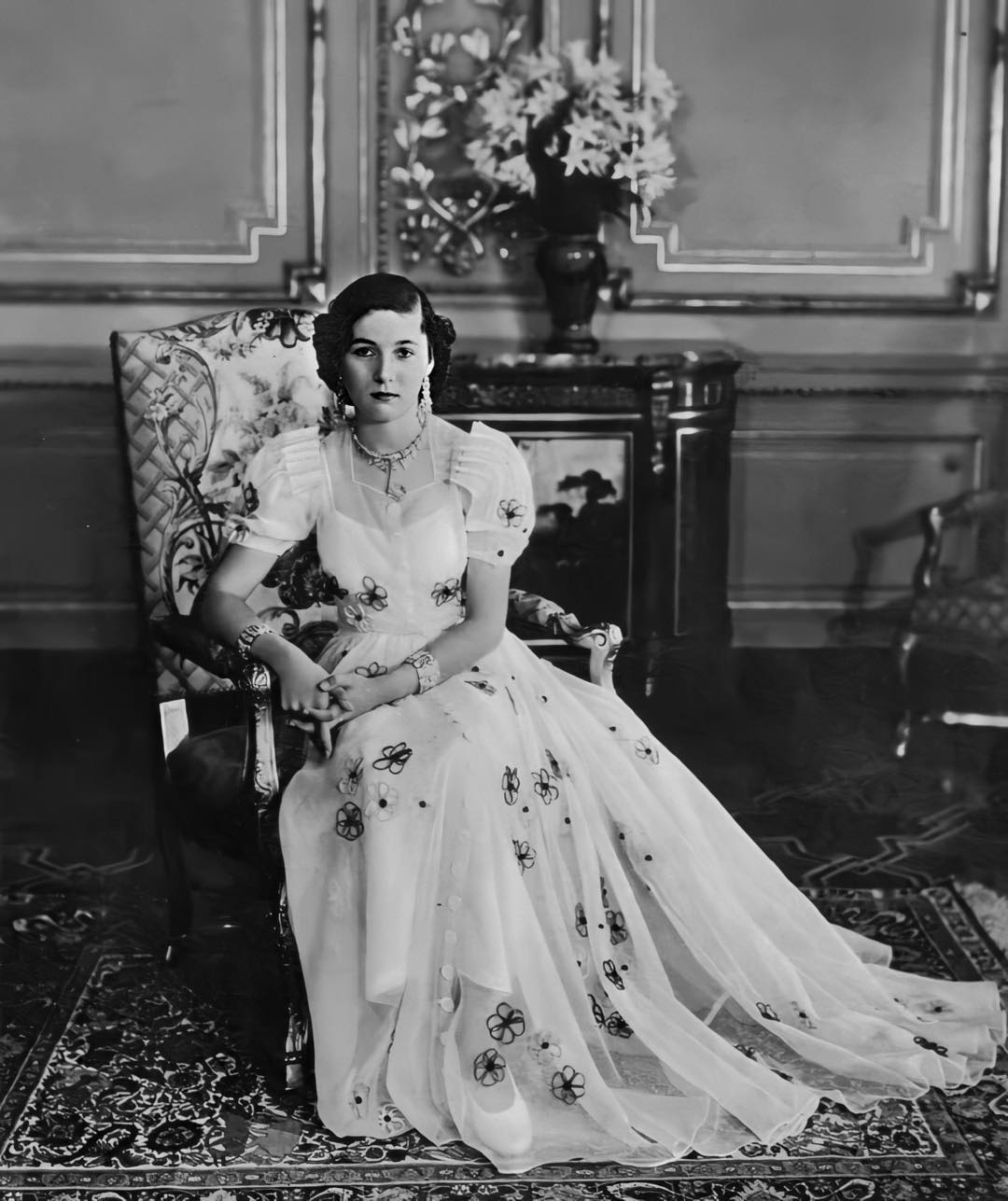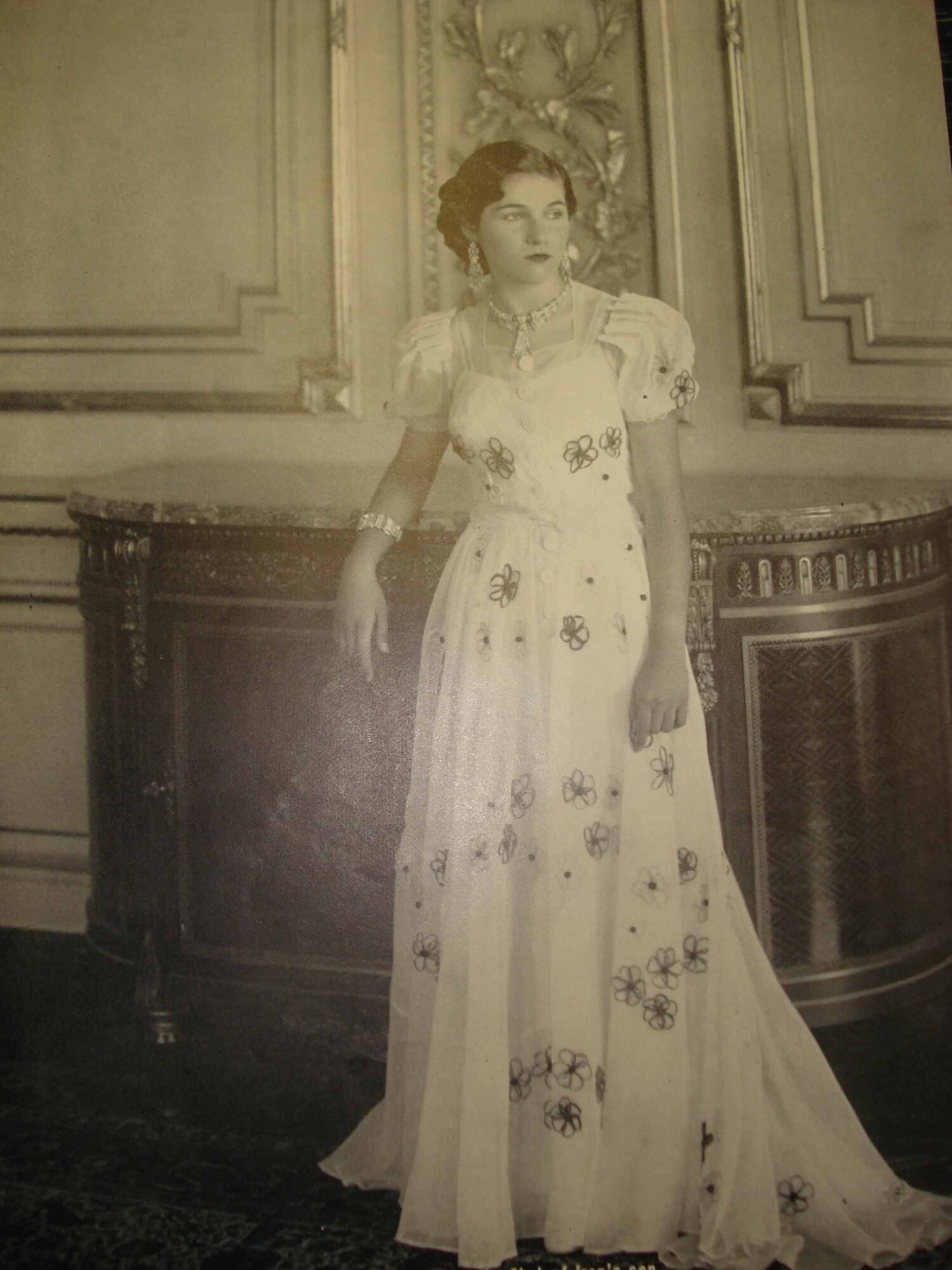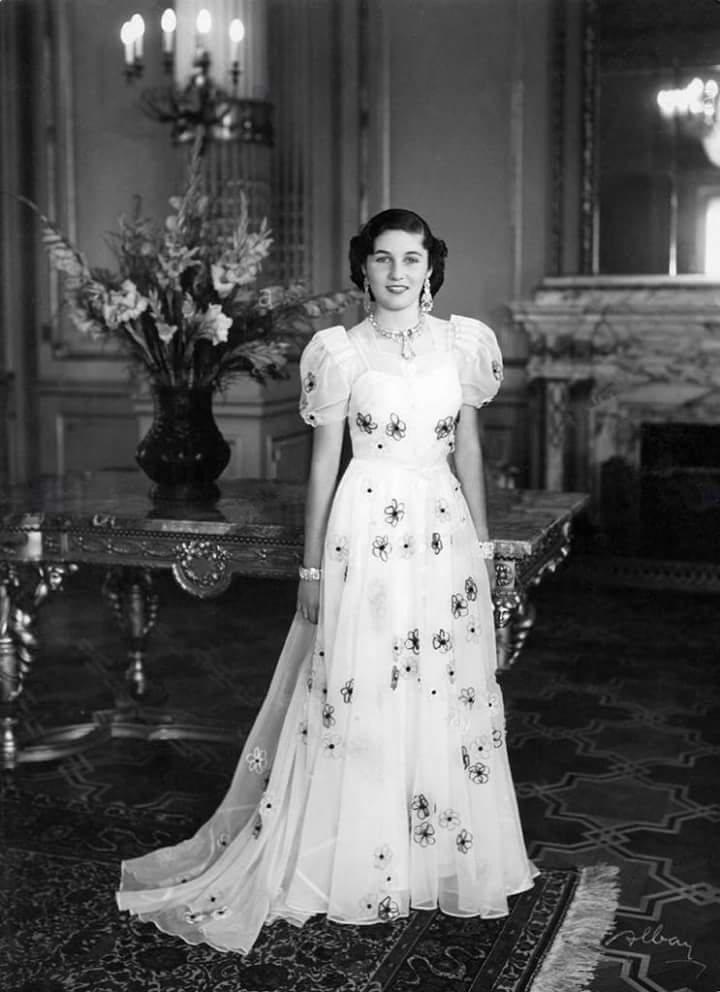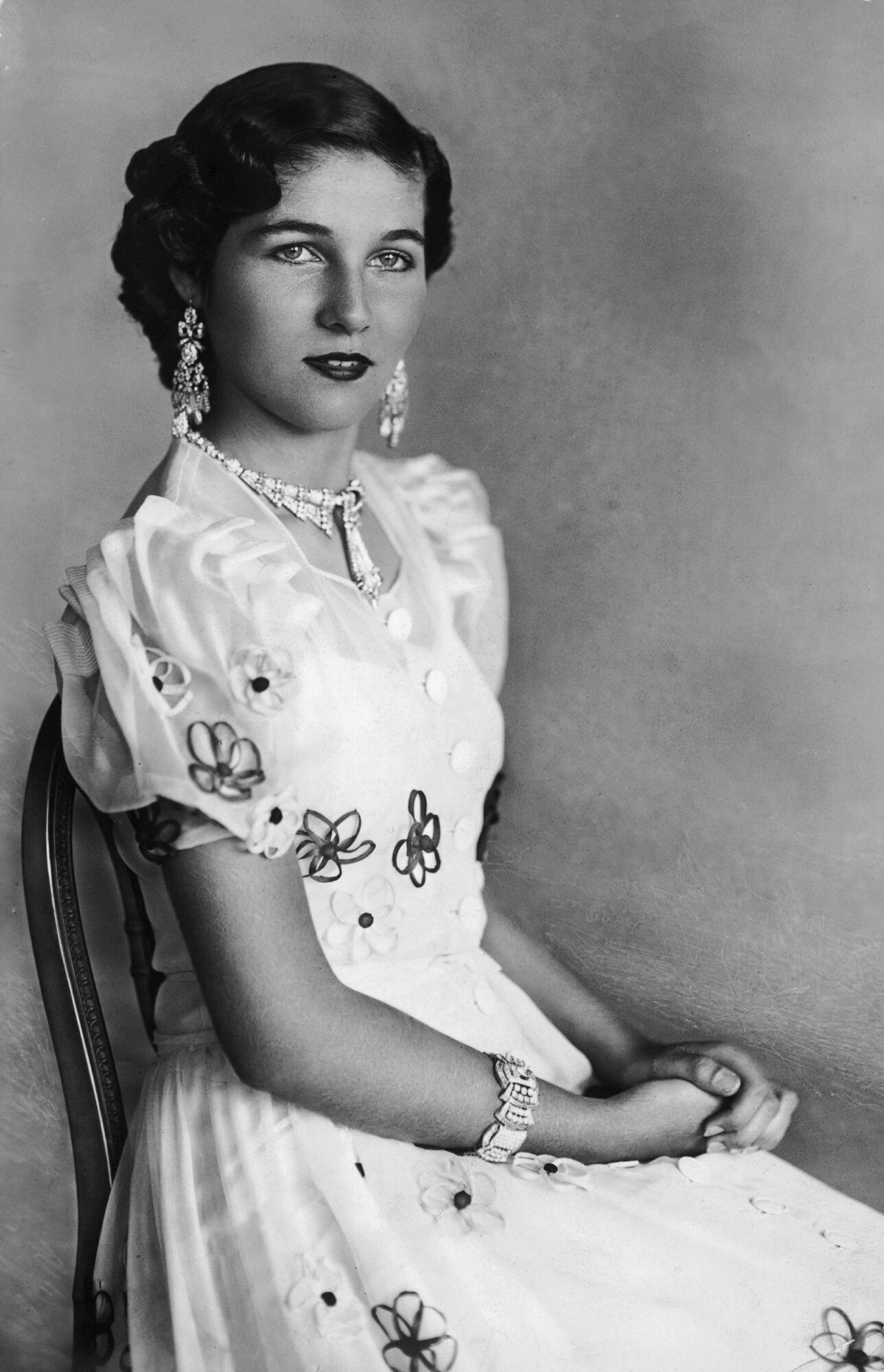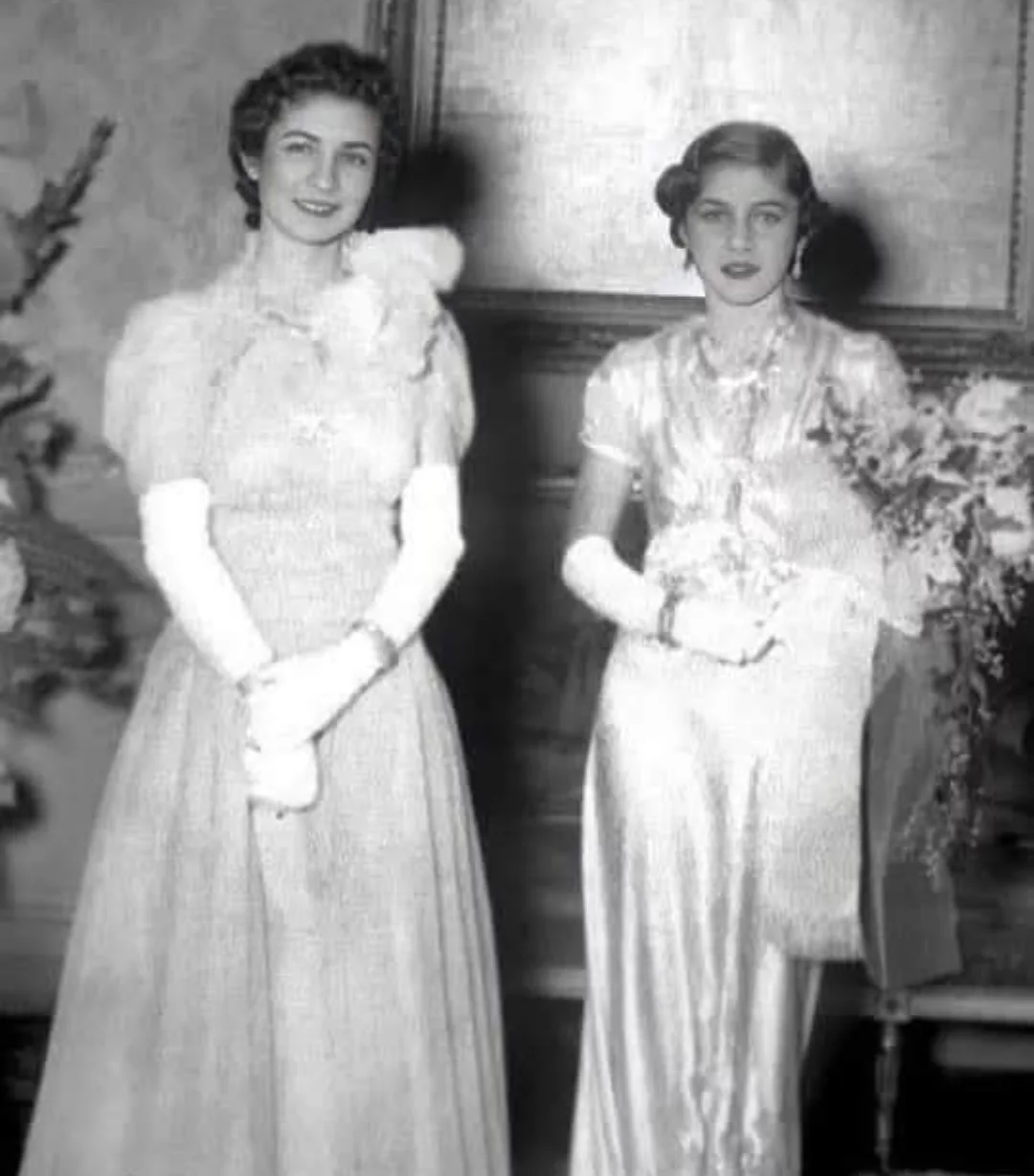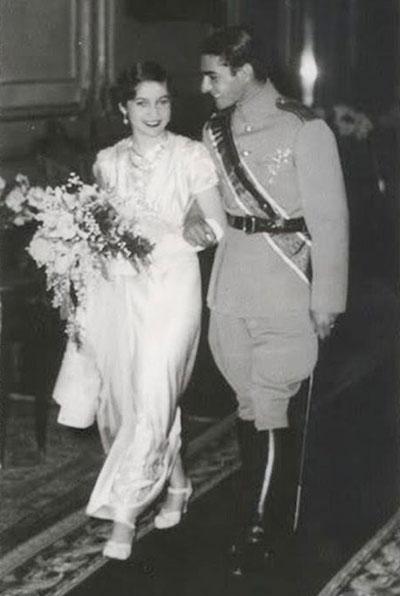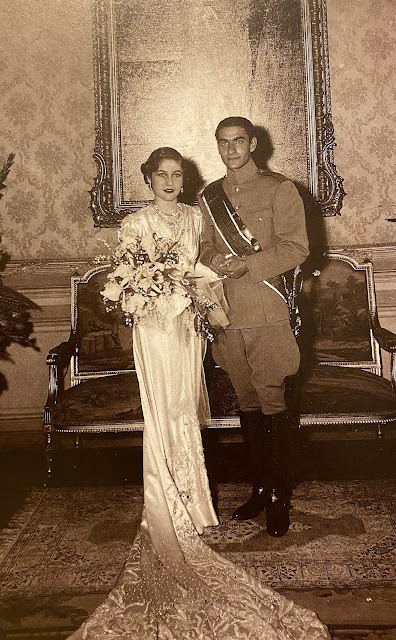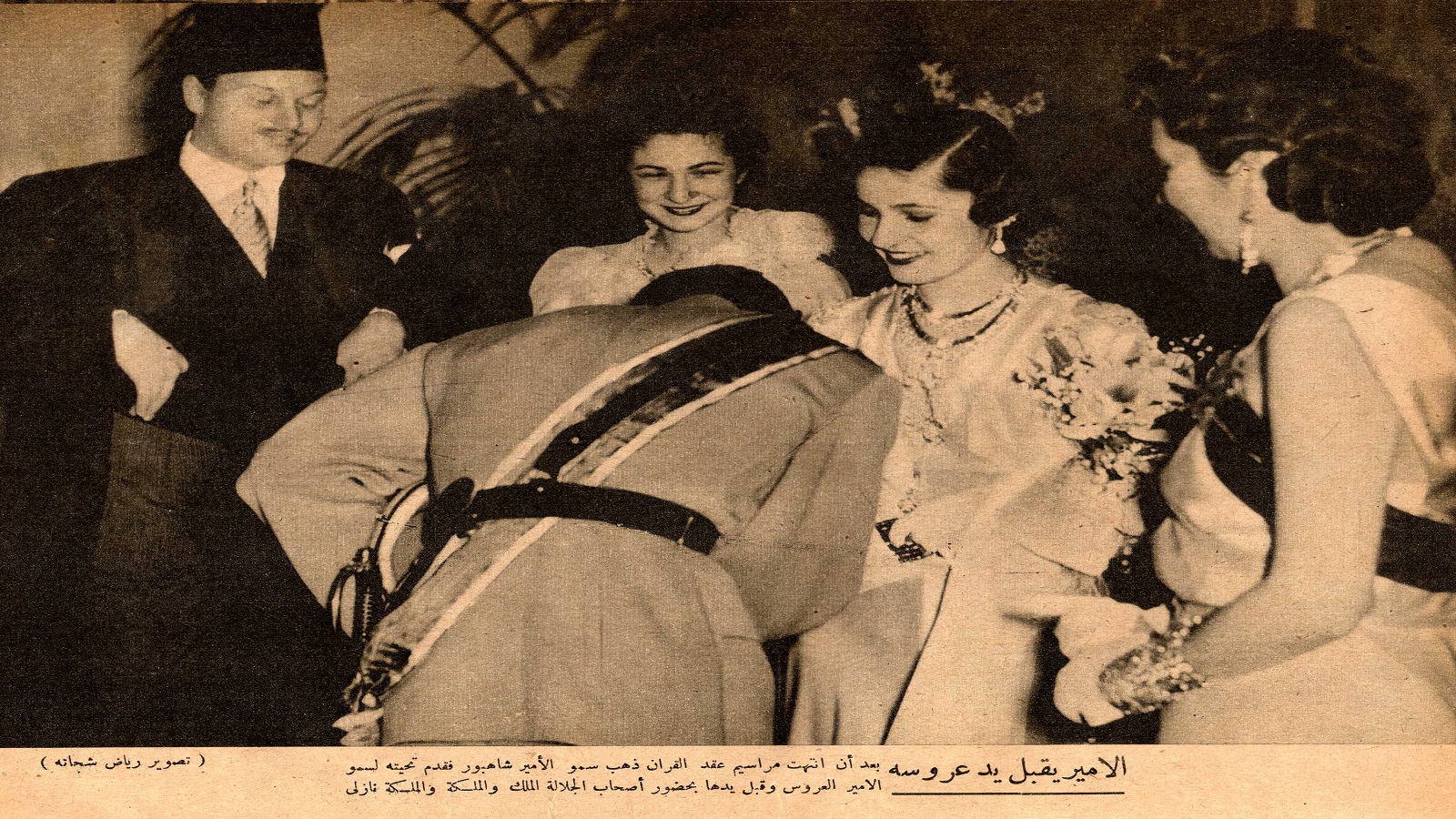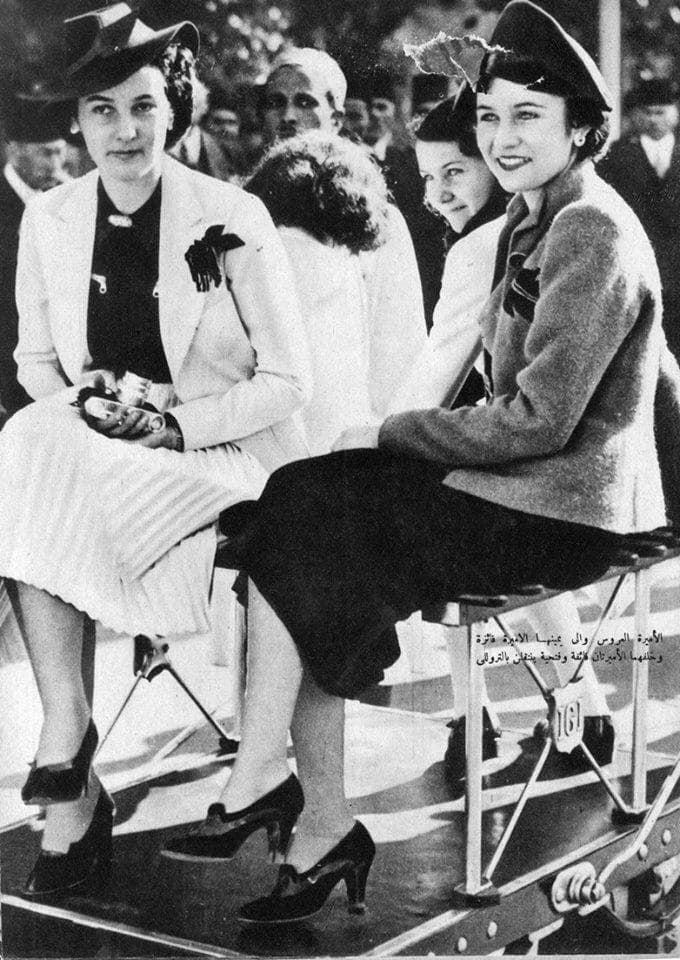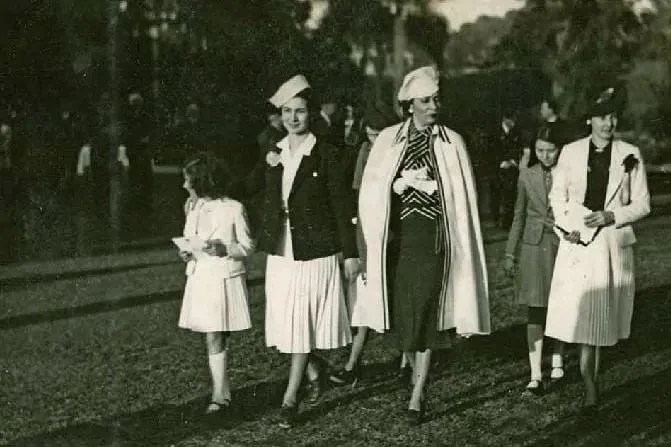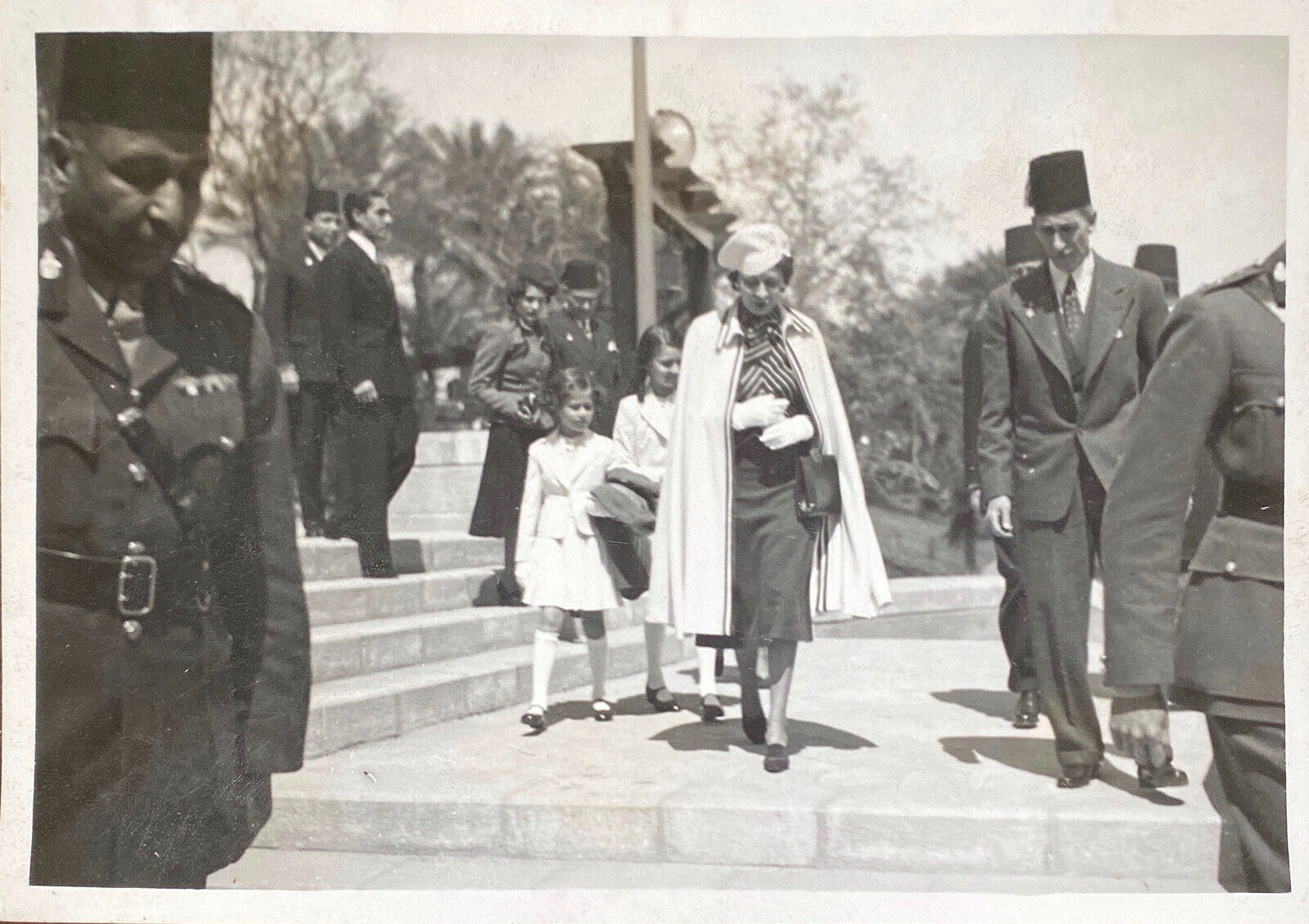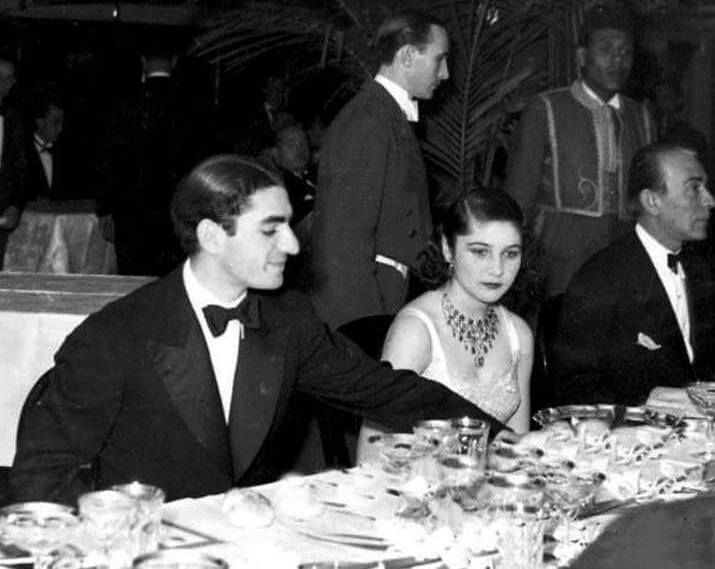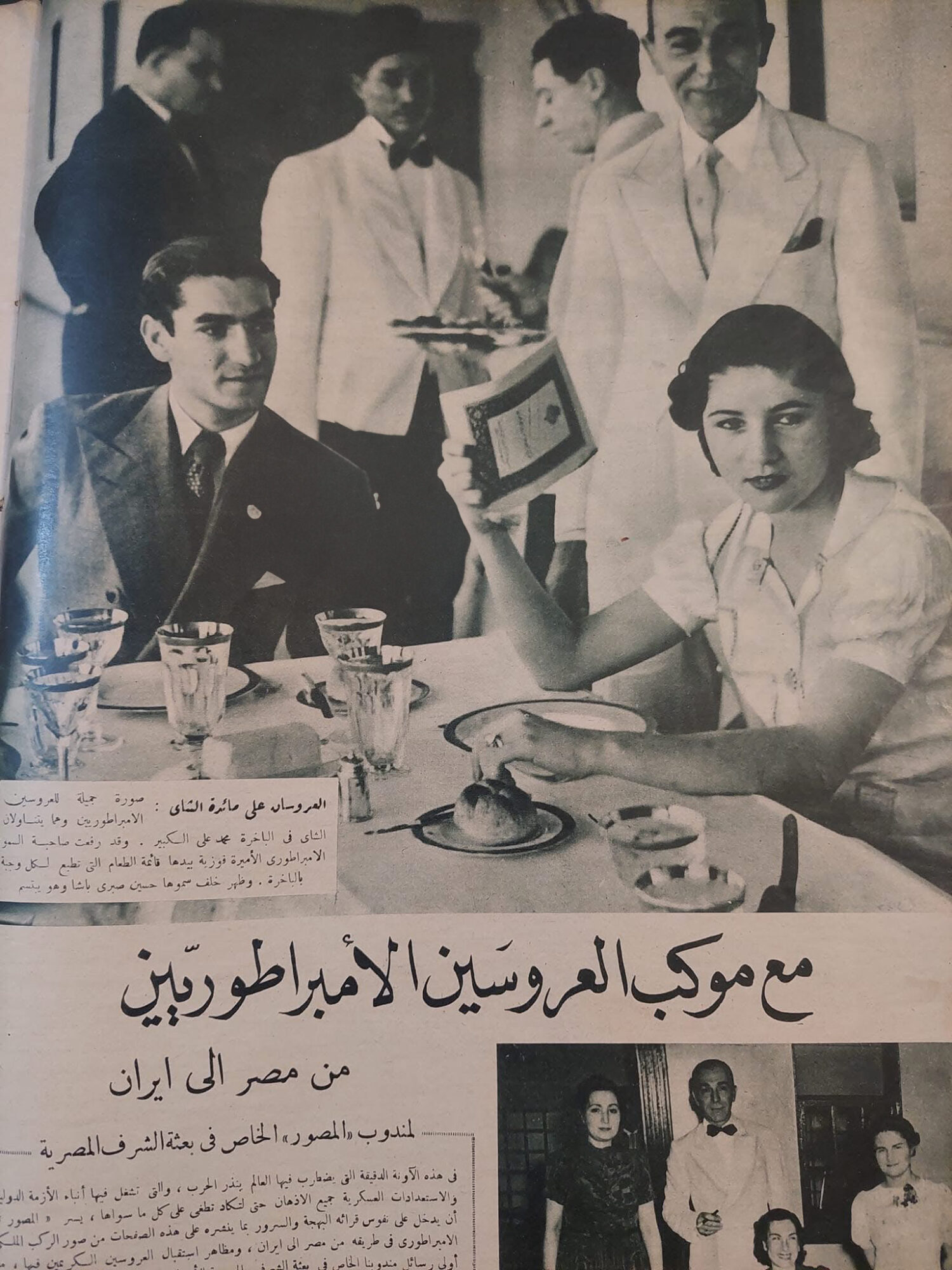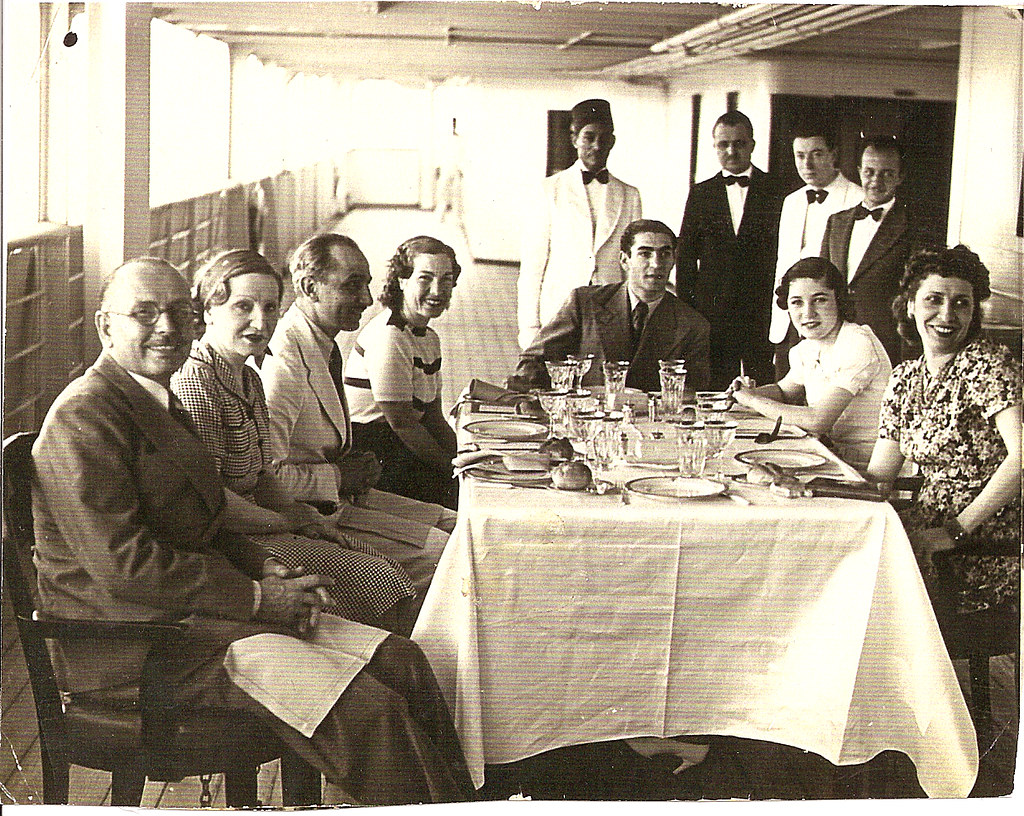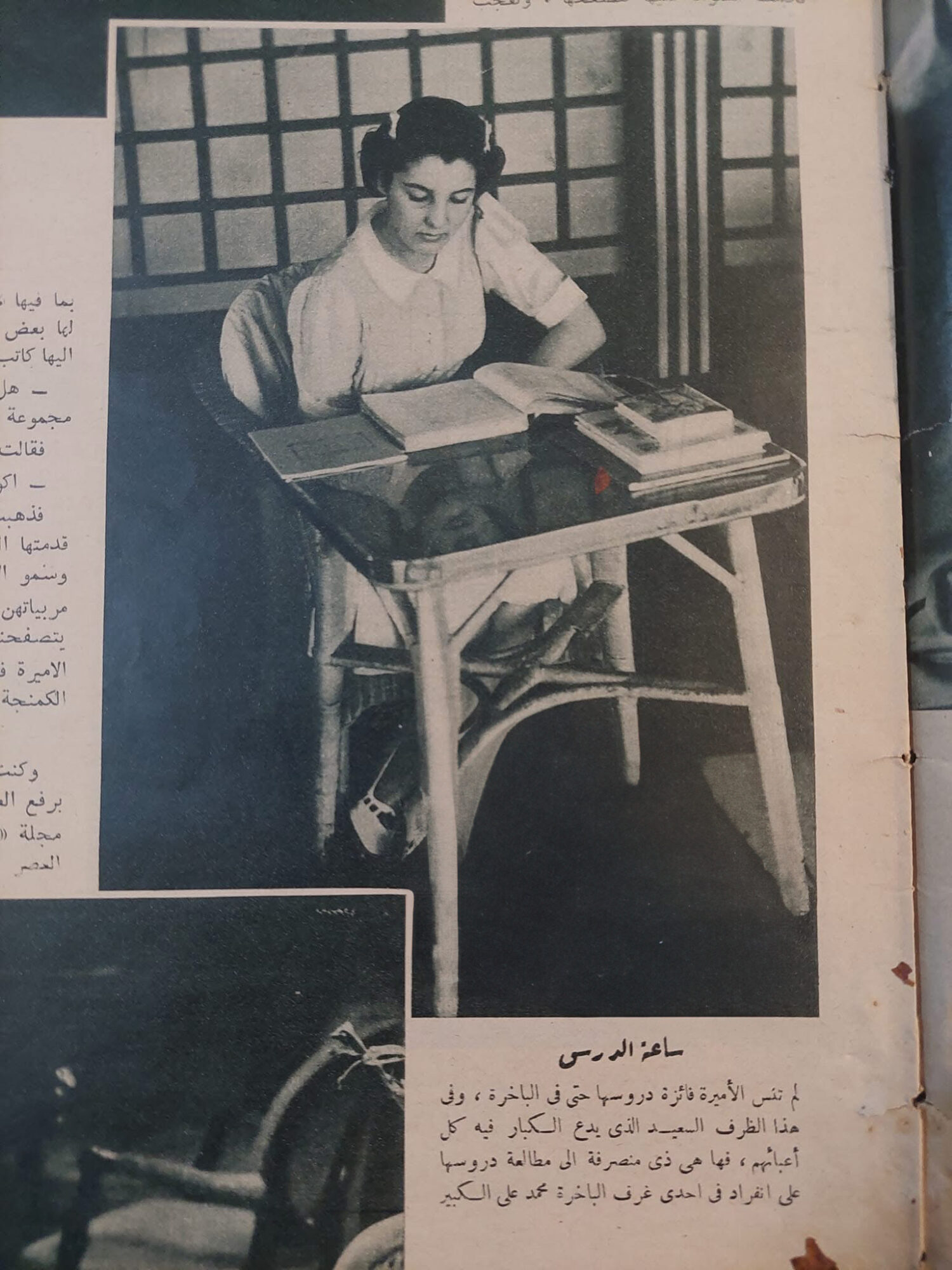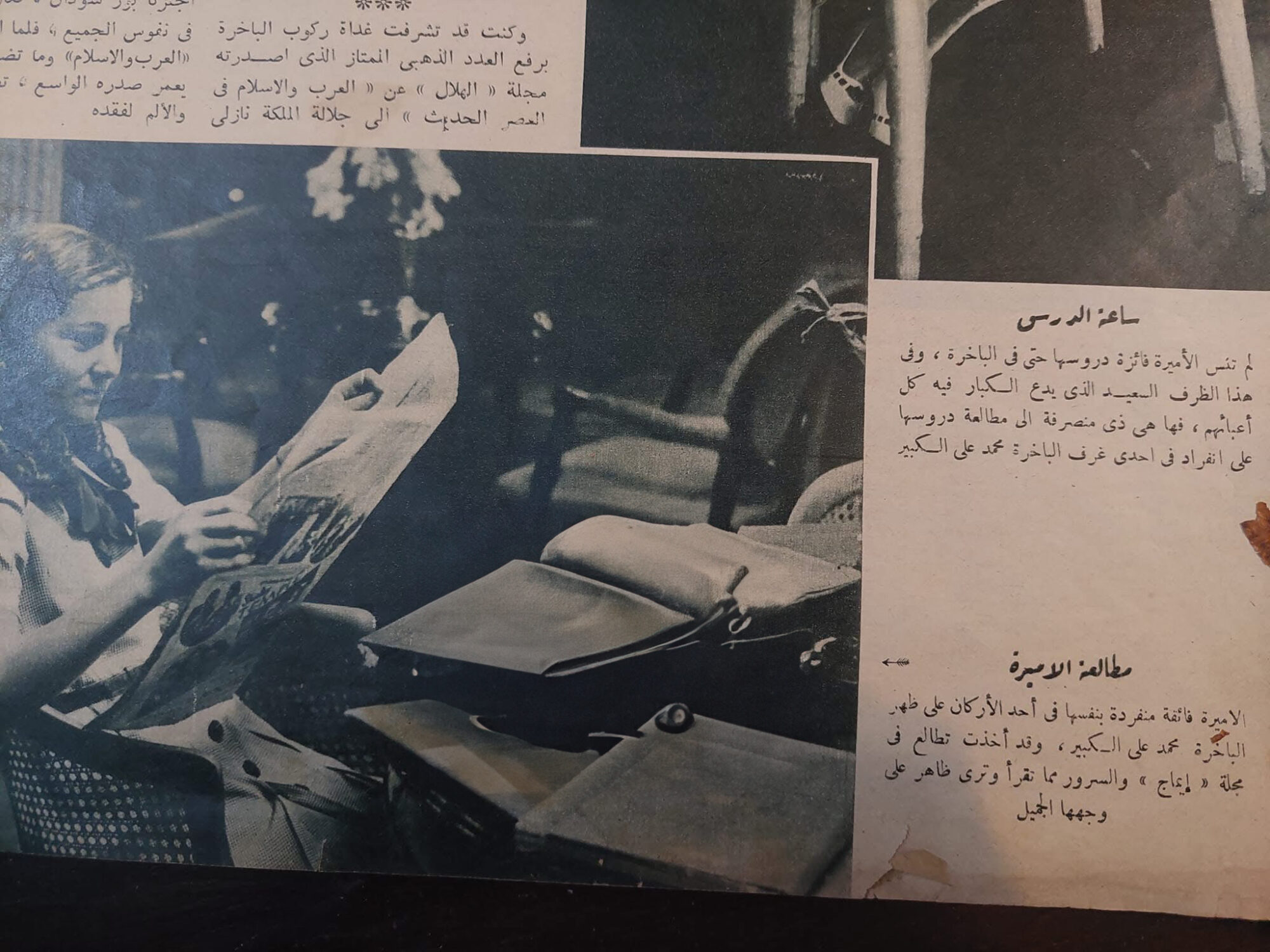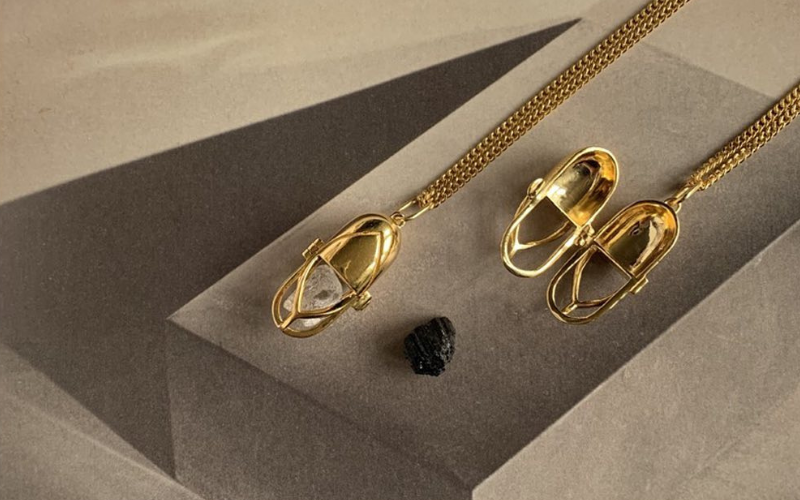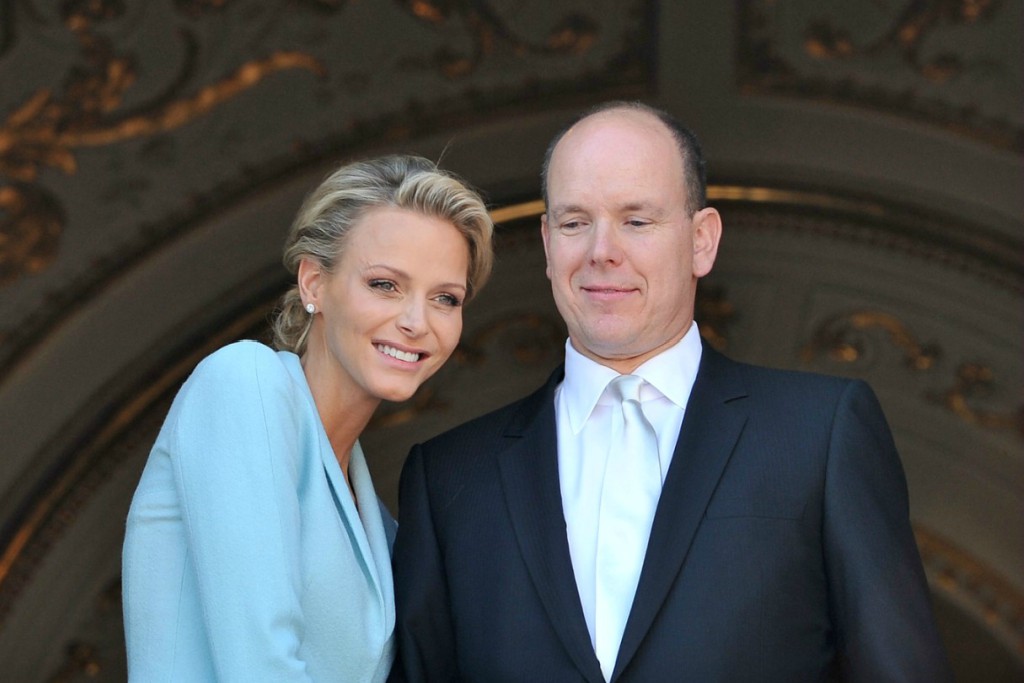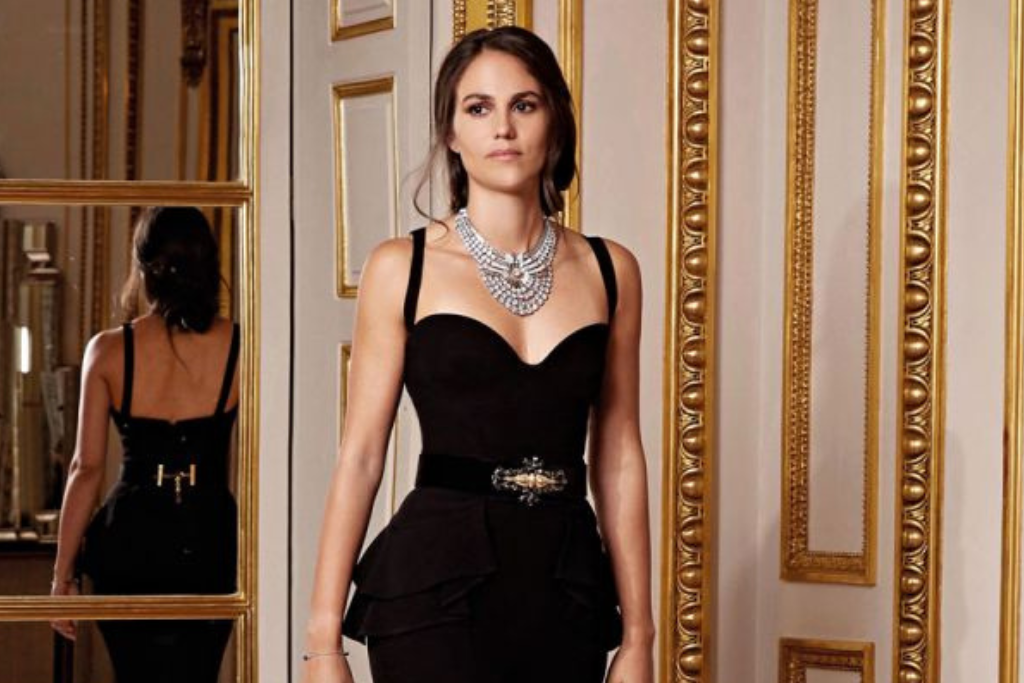Princess Fawzia’s wedding to Mohammad Reza Pahlavi was no ordinary affair. For one, the royal families of the Middle East were not as keen on intermarriage as Europeans. Cue Queen Victoria, the Grandmother of Europe. Members of the House of Mohammad Ali, in particular, did not prefer marrying from other royal houses, with the exception of the Ottoman dynasty. That is why when Reza Shah Pahlavi sent his delegation to Egypt to propose marriage between his son and heir, Mohammad Reza Pahlavi, and Princess Fawzia, the idea was met with much opposition and hesitation. The marriage negotiations lasted for many months; members of the government and even Fawzia’s immediate family had conflicting views. King Farouk, liked the prospect of his sister marrying a future emperor. His mother, Queen Nazli, was fervently against the union.
Princess Fawzia’s Engagement
With Princess Fawzia agreeing, the engagement was announced on Tuesday, May 24, 1938. For the engagement photo, Princess Fawzia went down the stairs of Montazah Palace, the family’s summer residence, and sat for the photographer at the press office.
She wore a Lanvin dress and jewellery borrowed from her mother.

Jeanne Lanvin dress in Vogue in 1938
The Iranian delegation sought to impress the Egyptian court with extravagant gifts. The Palestine Post reported in June 1938 that the Shah gifted Princess Fawzia three magnificent pearl necklaces. Mohamed Reza presented her with a ring, a painted mirror, a manuscript of the Quran, and a priceless emerald necklace (although in another newspaper, it was a ring). The gifts have allegedly all fallen flat.
Queen Nazli took charge of the wedding and preparations. First, she stipulated that Fawzia’s dowry be paid in gold coins and that Van Cleef and Arpels make her wedding parure. Then, the queen, Princess Fawzia, and her three sisters boarded the liner Nil on July 14, 1938, to embark on a trip to Europe. They spent several months in Paris, where Fawzia’s trousseau was selected.
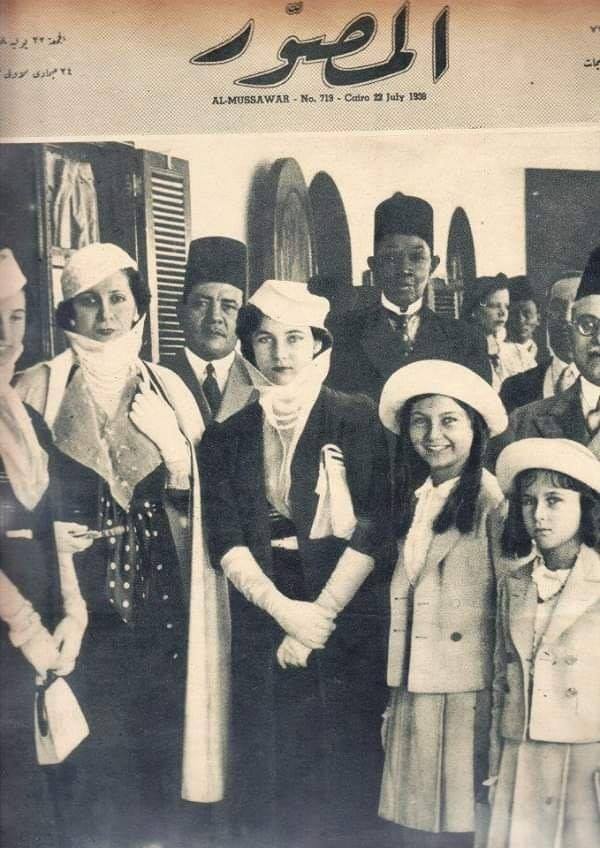
Queen Nazli had been a client of the biggest couture houses in Paris for almost two decades, and she chose every piece that Fawzia took to her new home, in her new role. Newspapers at the time of the wedding reported that the bride brought over 200 trunks to Tehran filled with over 100 evening gowns, hundreds of day dresses, and 7 fur coats.
Princess Fawzia didn’t need one wedding dress, but two: one for the wedding in Cairo and another for Tehran. Two couturiers were selected to make the gowns.
On March 3, 1939, the Crown Prince of Iran arrived in Cairo by royal train from Alexandria and stayed at Al Tahra Palace. The next day, he met his bride-to-be at Abdeen Palace, either in the Blue Salon or the Suez Canal Room. Later that evening, Queen Nazli hosted a dinner party aboard her yacht on the Nile. The next night, a banquet was held, and guests were served a delicious array of foods. The menu included chicken consommé, branzin, spit-roasted suckling lamb, and pistachio kunafa.
The prince wasn’t only on a tight schedule but also in poor health. Over the next 11 days, he attended official visits, balls, and galas, keeping up the pace until the wedding.
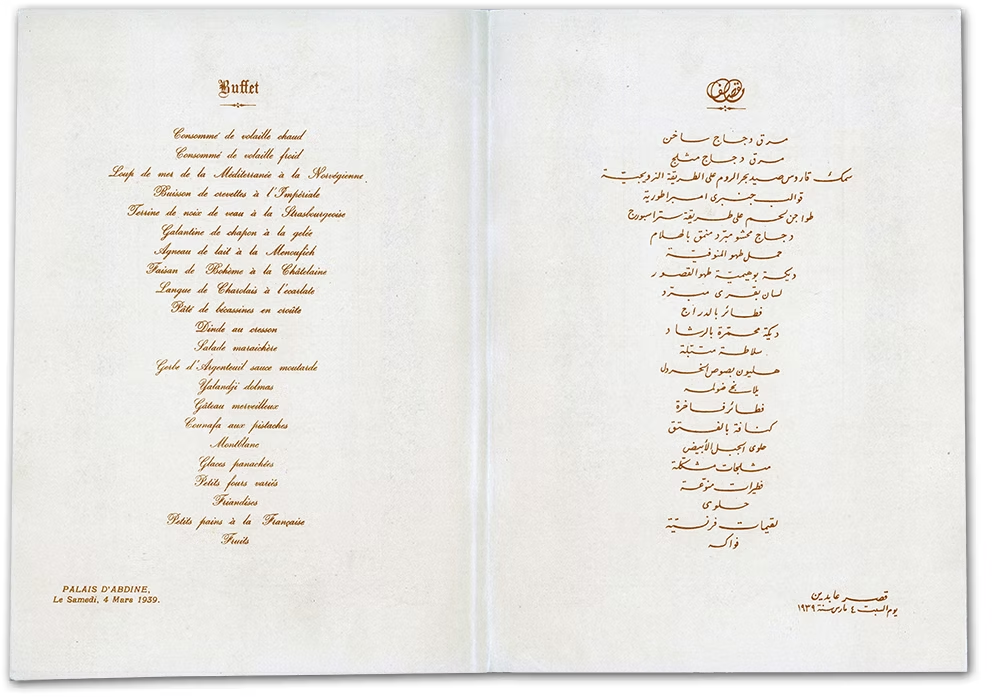
A Royal Wedding at Abdeen Palace
The wedding ceremony took place on March 15, 1939, at Abdeen Palace. In keeping with the royal tradition, the bride did not attend the ceremony. Instead, she was represented by her brother, while she watched from afar. After the religious contract signing, the Crown Prince was finally united with his bride. Unfortunately for him, he was so ill that he had to take to his bed immediately after the ceremony.
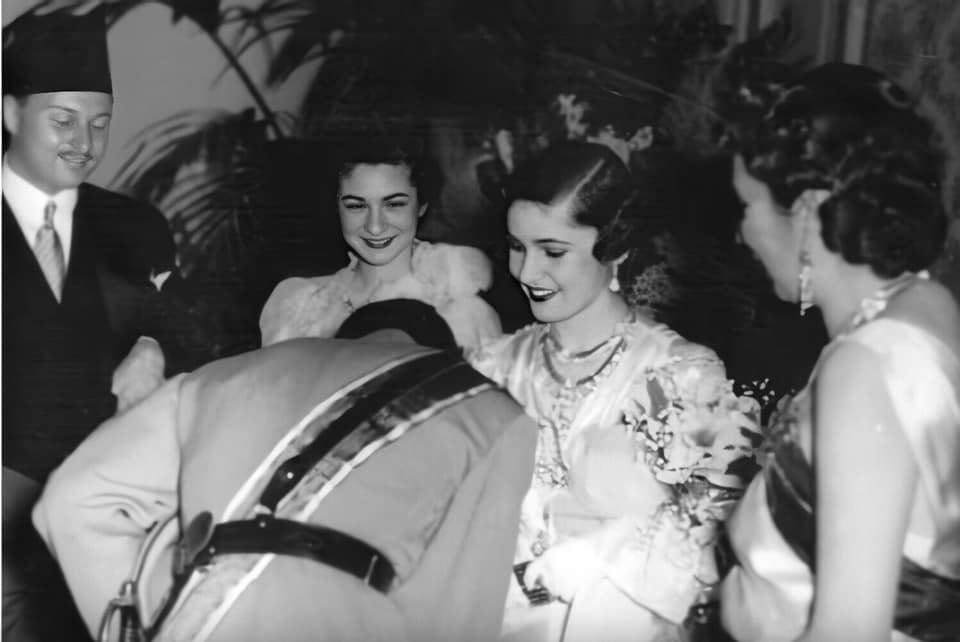
Wedding Dress by Callot Soeurs
Princess Fawzia was a vision in white, wearing a wedding dress by the French Maison, Callot Soeurs. The silk satin gown was a column silhouette that flared into a small train, making the princess look like a mermaid in photos. This is the first time the dress sketch is shared since the wedding in 1939.
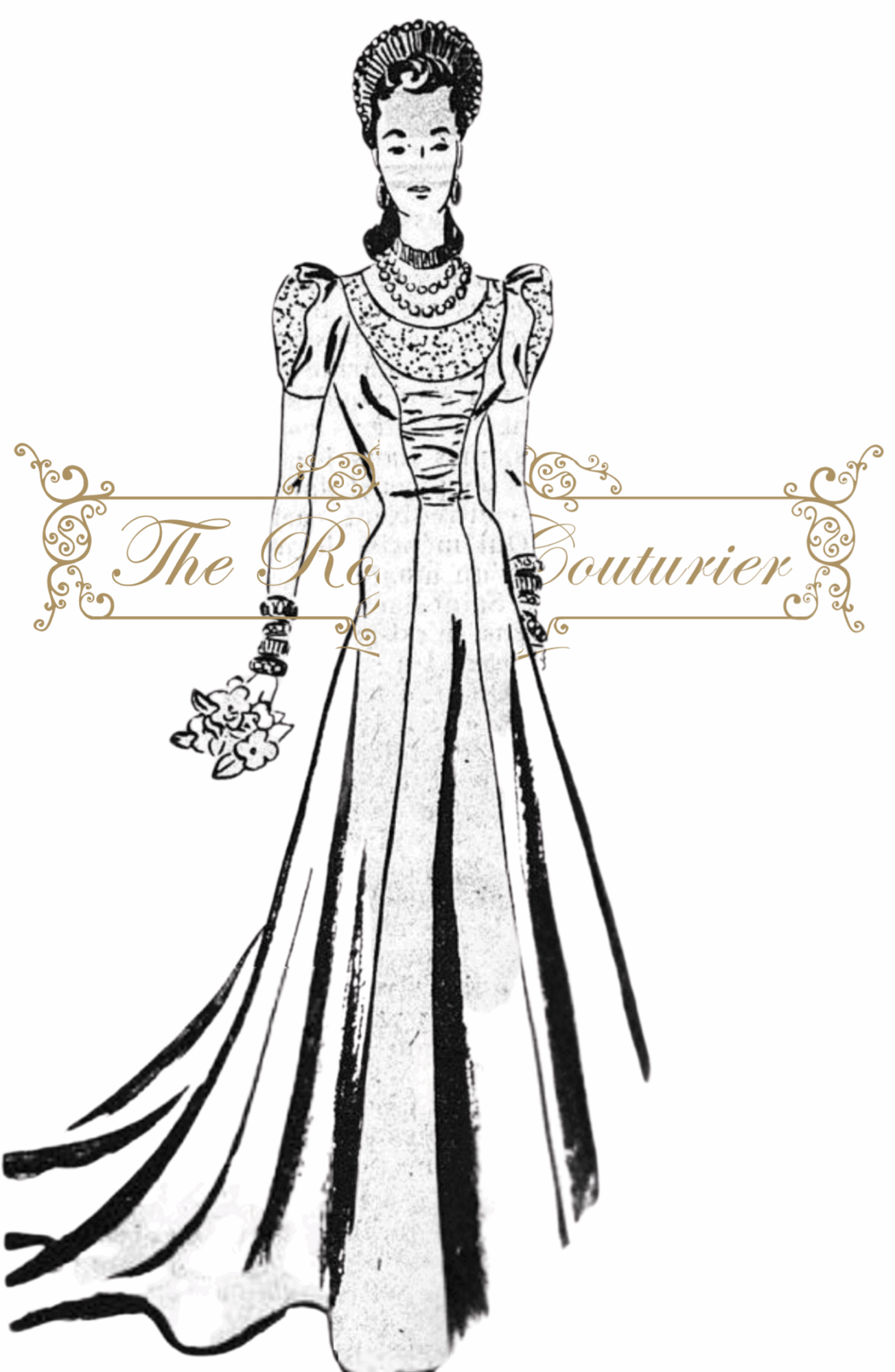
The gown also featured short puff sleeves and rhinestone embroidery on the bodice and the bottom of the dress and train.
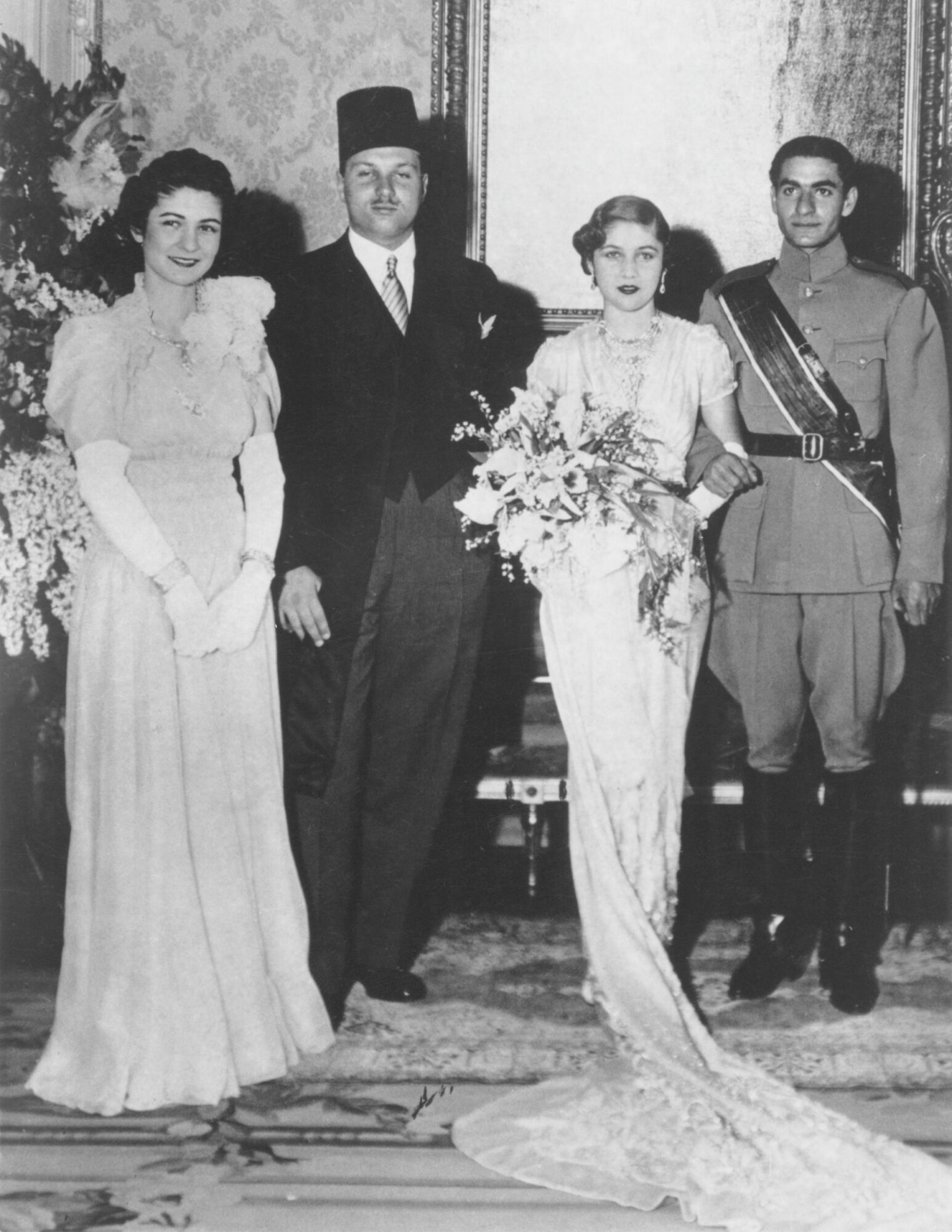
I consider this Princess Fawzia’s katb kitab dress, i.e., the dress worn for the ceremony, not the main wedding dress, which she wore later in the evening. However, since we have more photos of the ceremony, it’s the one that has become the most recognizable.
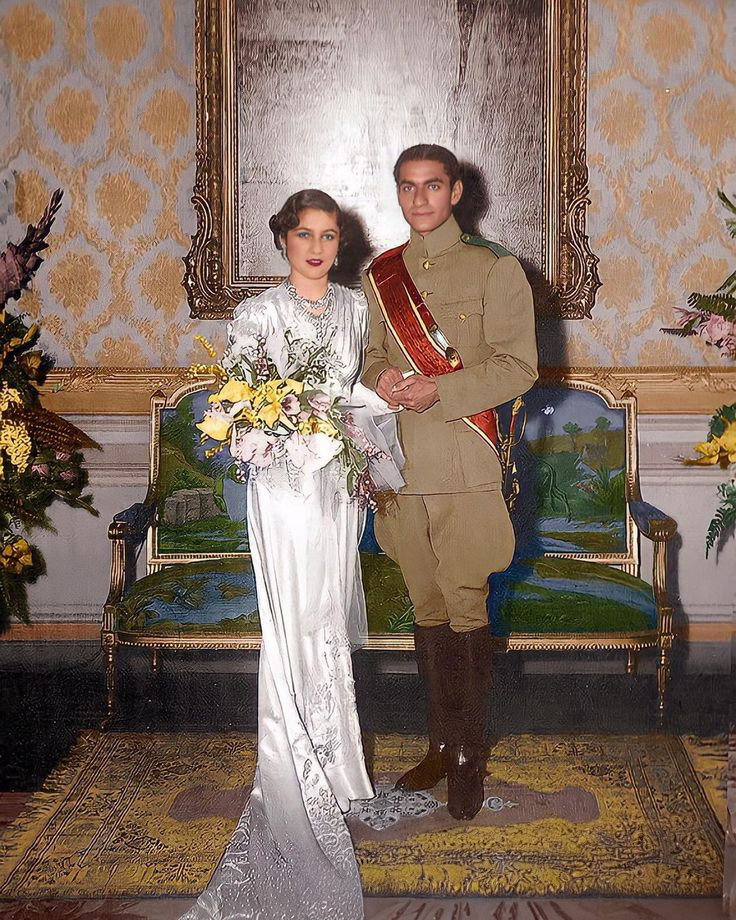
About Callot Soeurs
Four sisters, Marie Callot Gerber, Marthe Callot Bertrand, Regina Callot Tennyson-Chantrell, and Joséphine Callot Crimon, opened the door to their women-owned fashion house in 1895. This was an era dominated by men, like Gaston-Lucien and Jean-Philippe of the House of Worth, who designed Queen Farida’s wedding gown less than two years earlier. The business quickly became successful. In 1900, the house had been featured at the World’s Fair. At that time, they had a staff of two hundred people. By 1901, they had tripled their workforce. In the 1920s, Callot Soeurs were at the height of their success.
A January 1922 article in Ladies’ Home Journal claimed that “Callot probably has more rich clients than any other establishment in the world. They come from South America, from South Africa, and as far east as Japan.” Nazli, who was Queen Consort then, would have undoubtedly been one of their clients. Marie Callot Gerber, the eldest daughter, remained in charge of the house until she passed away in 1927. Her son, Pierre Gerber, took over the business, but the market had changed.
Callot Soeurs was absorbed by Marie-Louise Calvet in 1937. The 1939 commission for the wedding included at least Princess Fawzia’s wedding gown and Queen Nazli’s mother-of-the-bride dress, and a pale pink gown with a lace and velour overlay for Princess Fawzia was probably the Maison’s last moment of glory. After that, it continued to decline until it ceased operations in 1952.
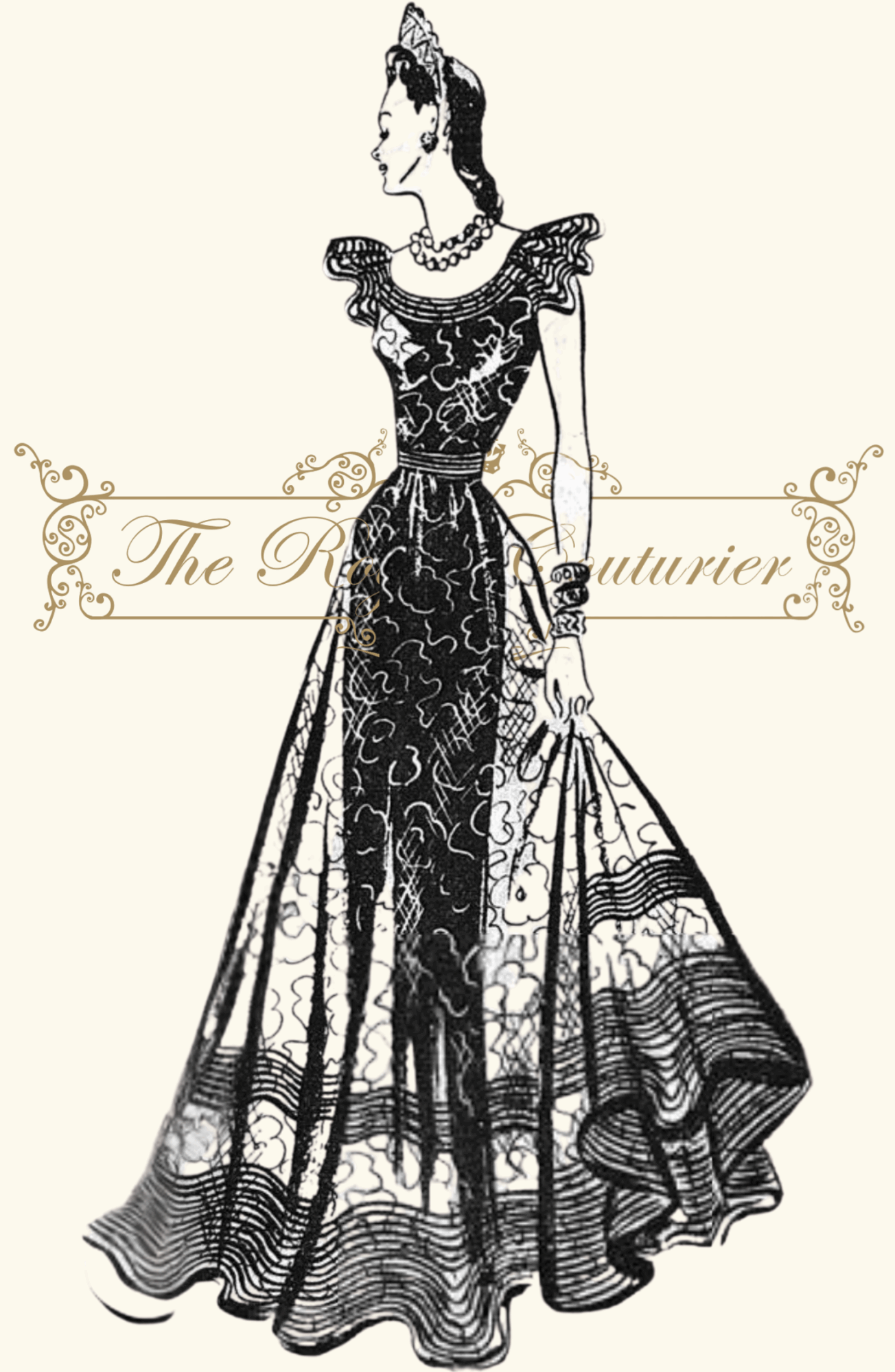
The Callot Soeurs were back in the spotlight at the Costume Institute’s spring 2024 exhibition, Sleeping Beauties: Reawakening Fashion, where a 1930 mermaid Callot Soeurs wedding with a cathedral-length train took center stage.

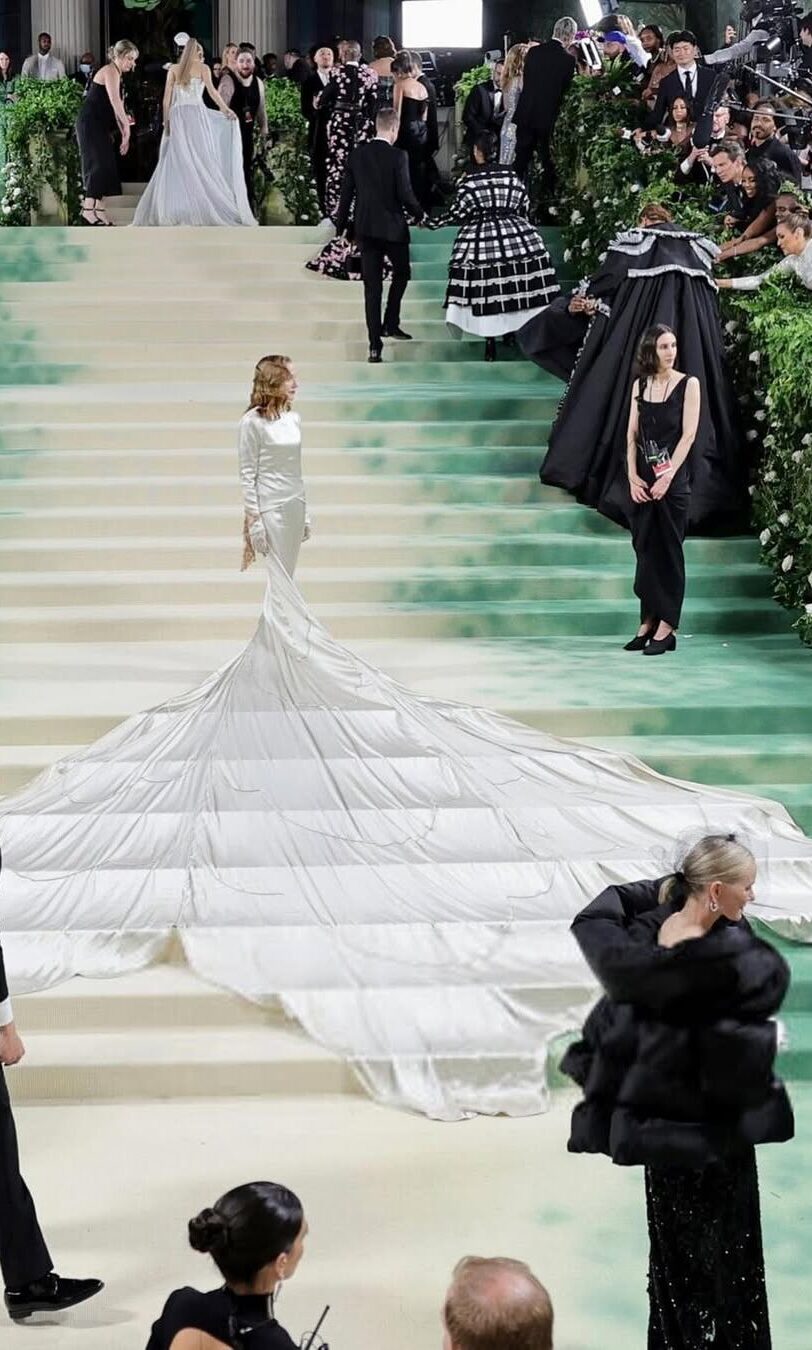
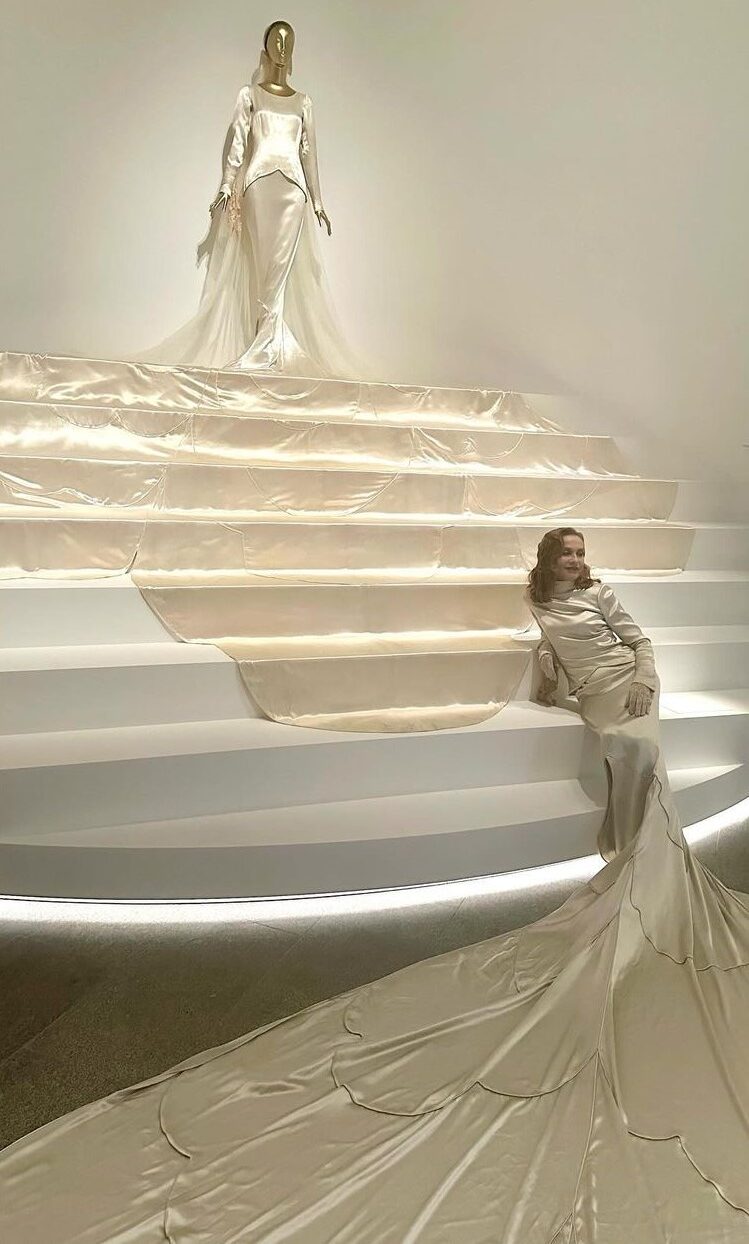
This dress with the scallops on the train, inspired the Balenciaga dress Isabelle Huppert (a great-granddaughter of one of the soeurs) wore to the Met Gala in 2024.
Queen Nazli had worn Chanel for her son’s wedding. For Princess Fawzia’s nuptials, she chose Callot Soeurs for herself.
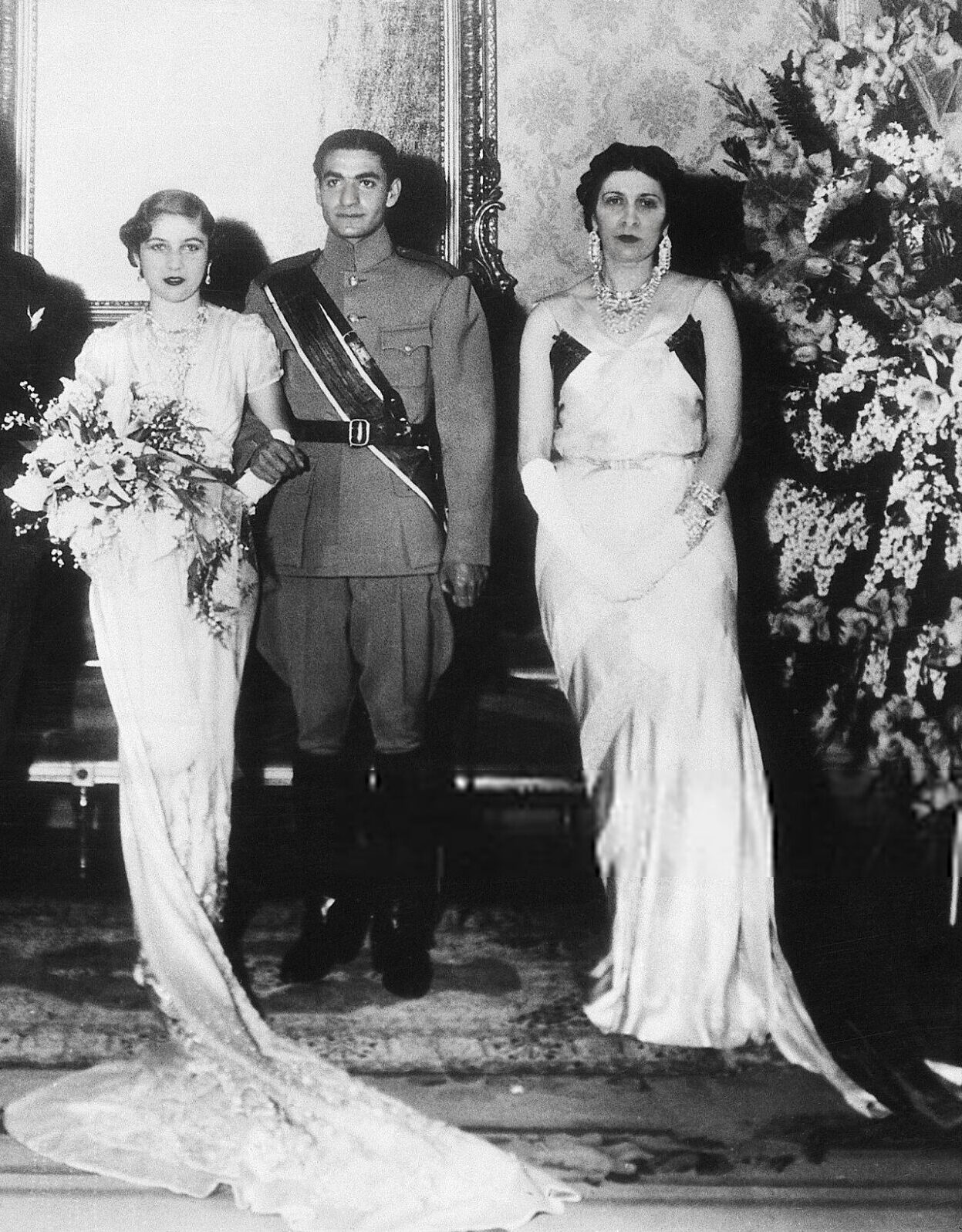
Her sleeveless gown was made of white crepe and silver lamé panels in a diamond pattern. The top diamond shape was made of green velvet that cascaded into a short train. This is not your typical mother of the bride dress by any means. Queen Nazli had lived for almost two decades under extremely strict rules set by King Fouad. Now that she had become a widow, she was free to appear in public and dress as she liked. I think this dress, in a way, reflects her sense of liberation.
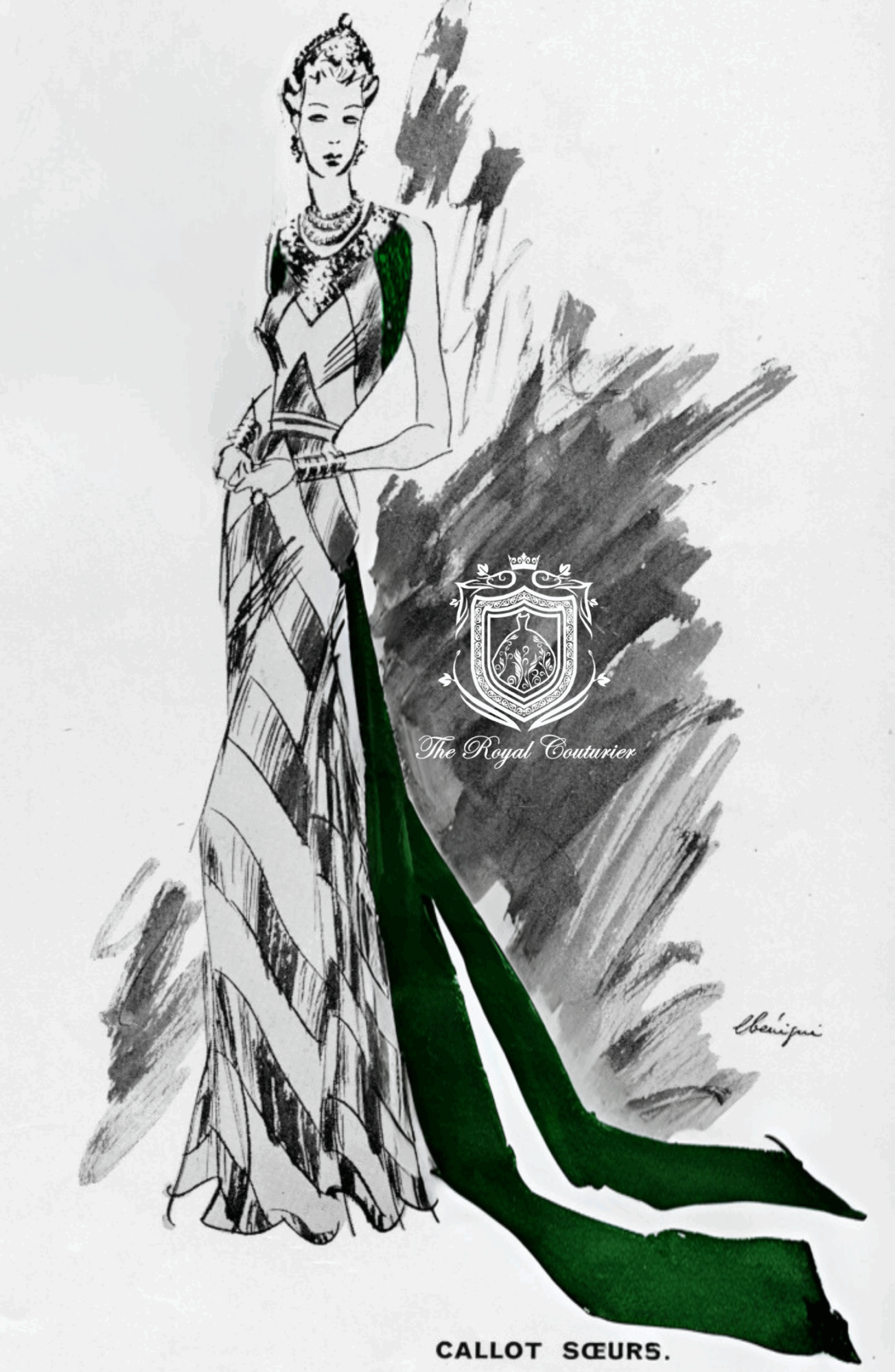
Wedding guests were handed a silver box decorated with an applied silver gilt ‘M F’ monogram made by court jeweller, Ahmed Naguib Bey, who owned a beautiful palace in Heliopolis that I hope to cover in a later article.
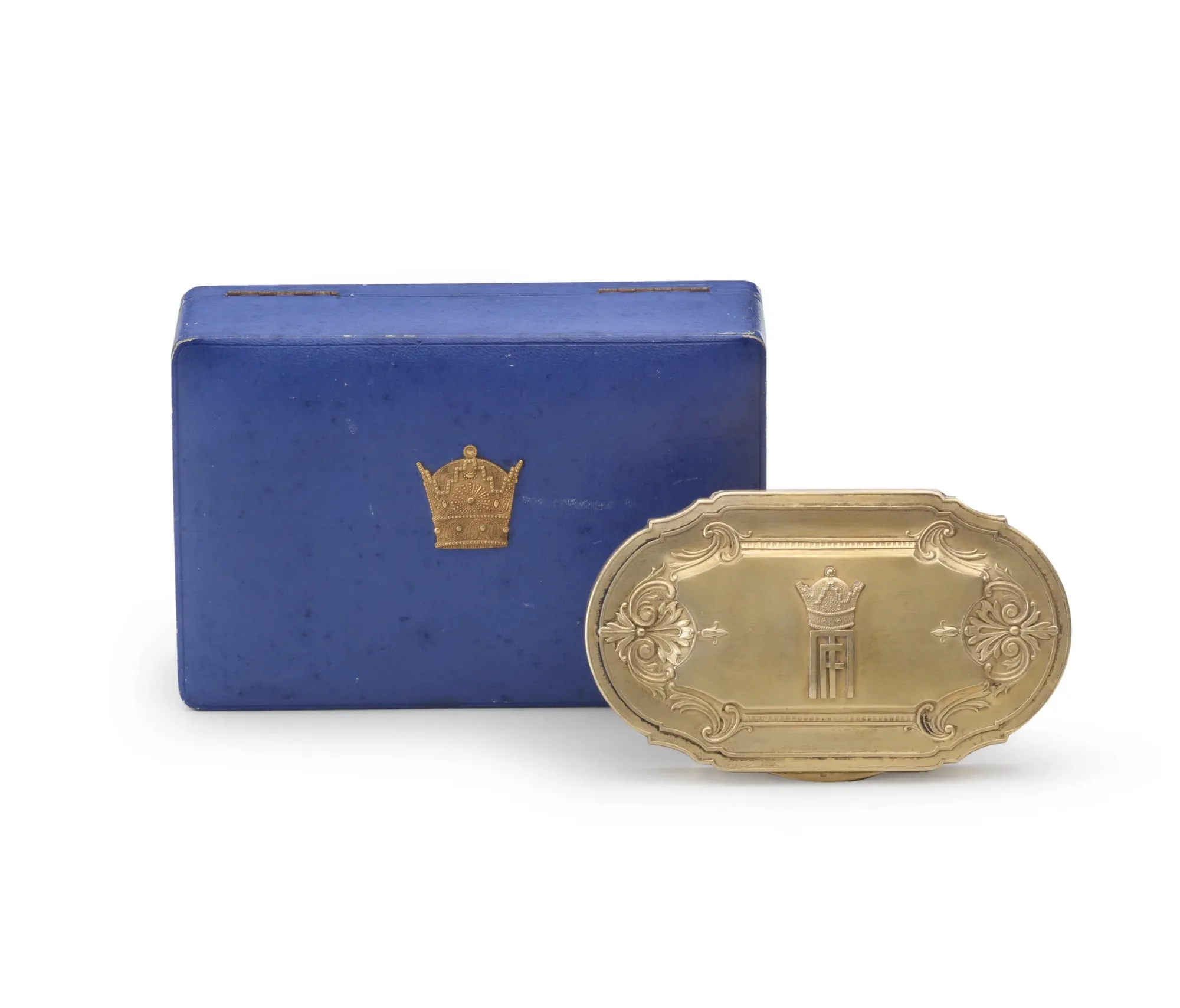
Several balls and celebrations followed the signing of the marriage contract. Their dates are a little hazy. The king hosted a banquet dinner At Abdeen Palace on the night of the wedding. As Crown Princess of Iran, this was the first time Fawzia wore her Van Cleef and Arpels parure. As if it weren’t enough, she also paired it with a triple row riviere necklace from the Iranian Crown Jewels. It was set about a year prior to the wedding, from loose stones in the collection.
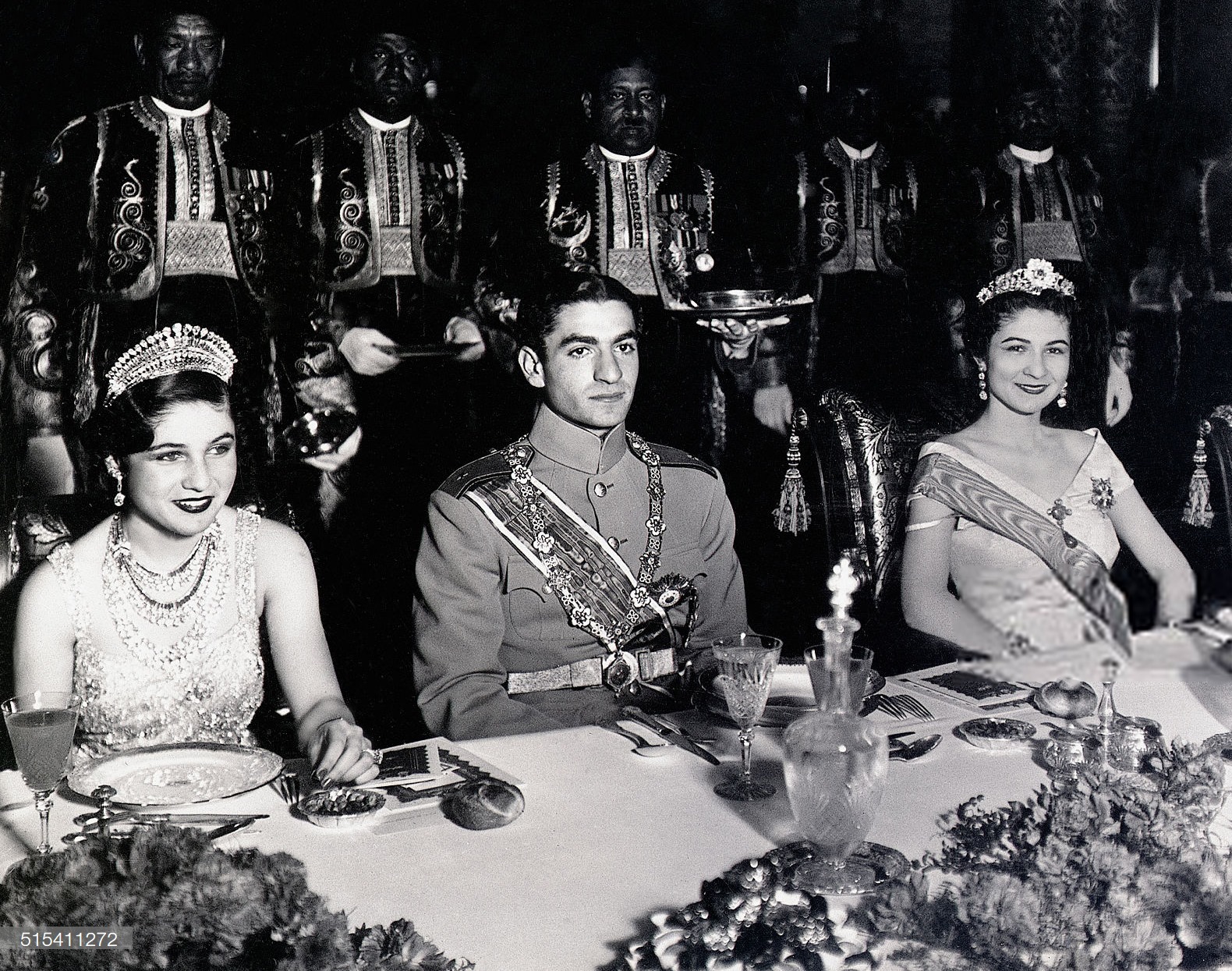
King Farouk also hosted a dinner inside a lavish tent set up in the gardens of Qubba Palace specially for the occasion. It is said that this ball took place on March 29. I personally don’t think this date is accurate as it was two full weeks after the first wedding celebration. At that party, thanks to Queen Nazli’s insistence, Umm Kalthoum performed a song specially written for the occasion. You can listen to it below.
Naturally, the bride wore a different dress. This number featured long lace sleeves. The now Crown Princess also wore a long veil. Even though this was the real “white wedding”, unfortunately there are not enough photos to see the dress clearly or find the designer behind it.
We are told that the newlyweds took a small boat in the Palace’s lake while the band played romantic music. It sounds like a night straight out of a fairytale. Then, a short honeymoon followed.
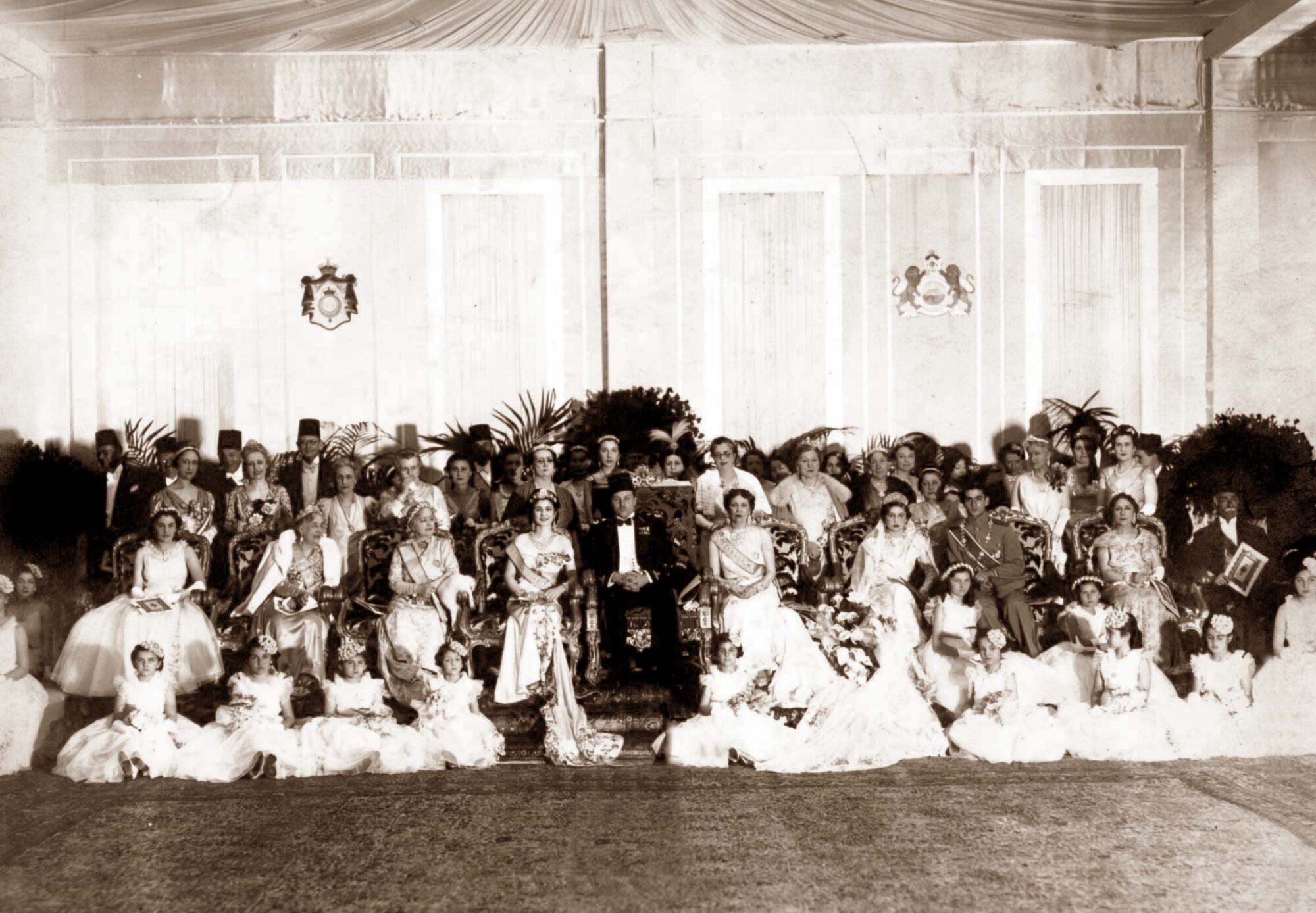
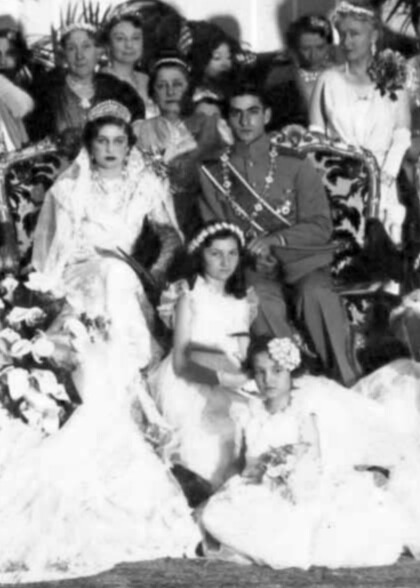
The couple, along with the king and the two queens, embarked on the Kassed Kheir yacht.
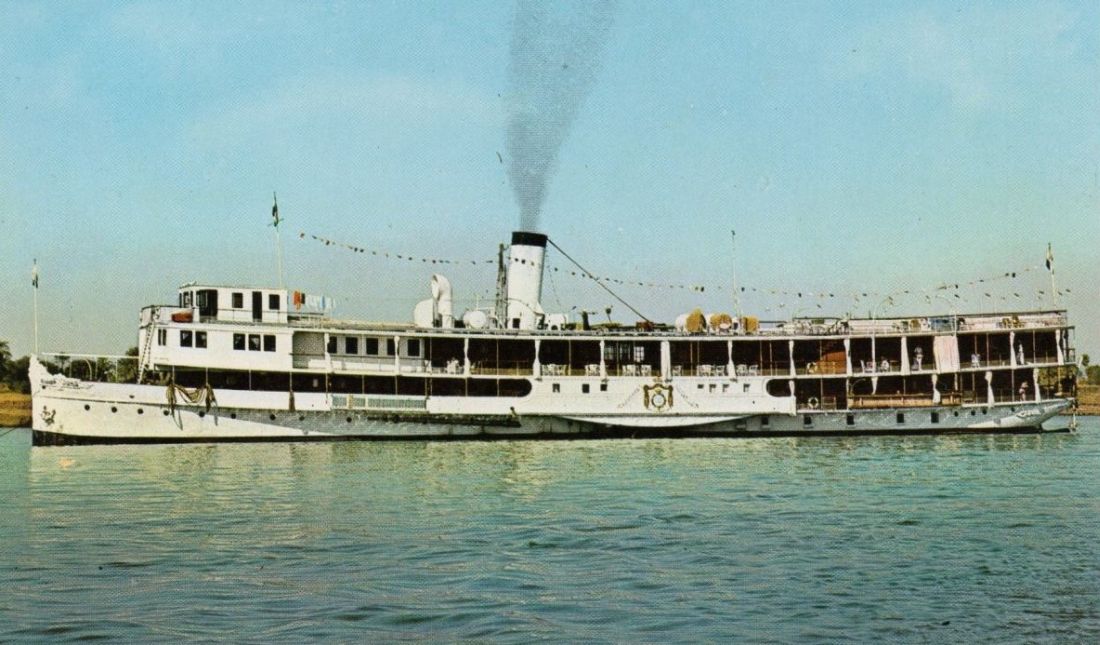
They all headed to Al Qanater El Khayriyah where they spent some time in the countryside.
The couple also had a brief honeymoon in Alexandria, where they stayed at Villa Antoniadis, which sits on 48 hectares of lush gardens.
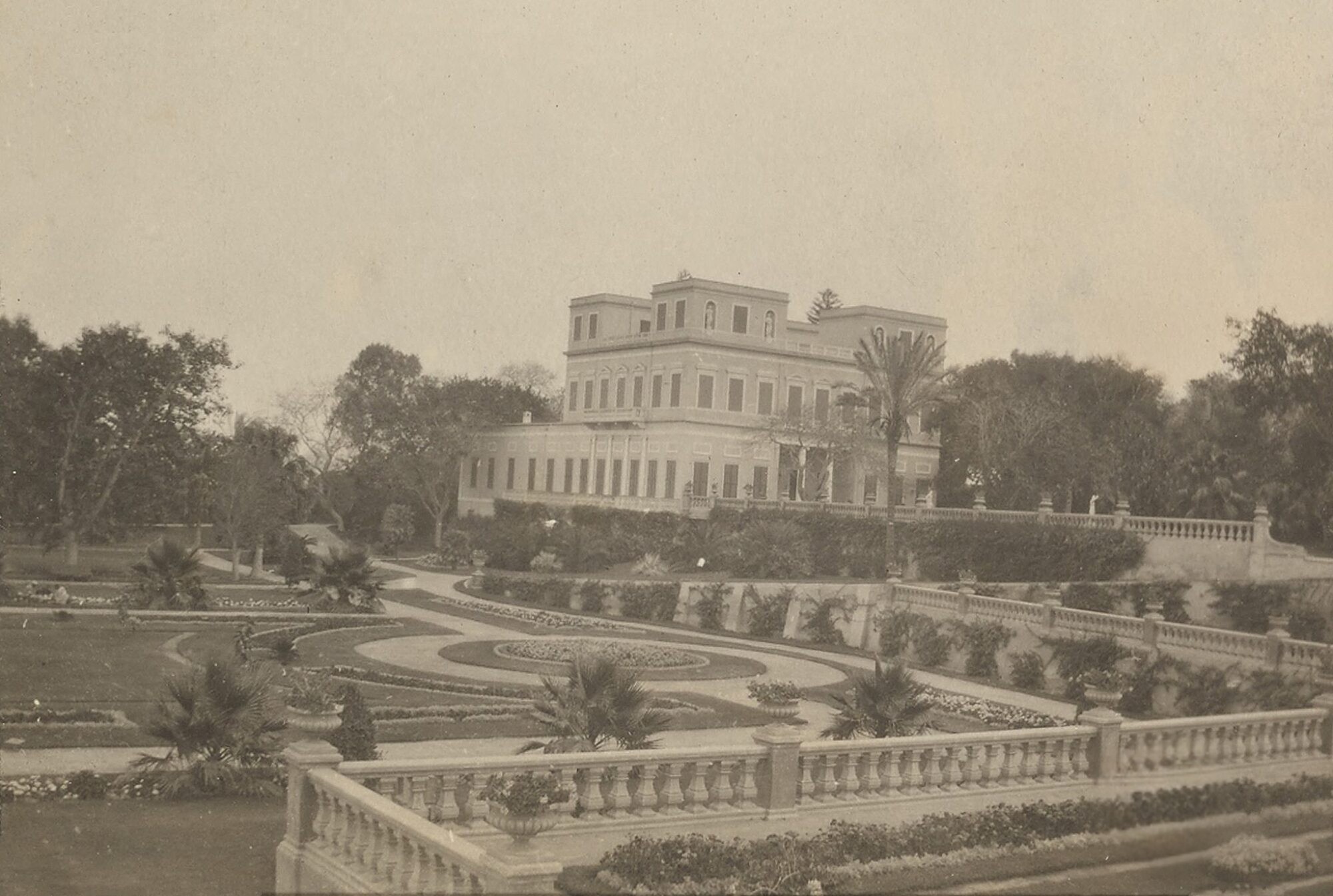
Eventually, the newlyweds were to head to their new home, Tehran. And so, on April 4, 1939, she left Cairo on the royal train to Port Said where the King bid her farewell before she boarded the Mohamed Ali Steam Ship along with her husband, her mother, and her three sisters.

King Farouk saying goodbye to his Sister, Princess Fawzia in Port Said before she left to Iran.
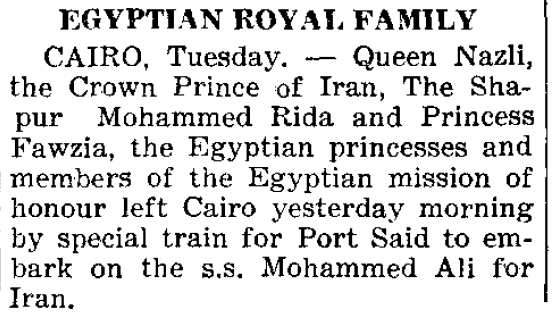
Clip from the Palestine Post Tuesday, April 5, 1939
The S.S. Mohamed Ali was equipped with many luxuries, one of which was olive soap imported especially from Palestine. Aboard the Mohammed Ali, the celebrations continued. In one photograph, we can see Queen Nazli at a party hosted by Ahmed Abboud Pacha, the Egyptian businessman who also built the renowned Immobilia Building in Cairo, where a lot of celebrities lived. The Queen was wearing her kokoshnik tiara, which was rarely seen. Its origins, much like its destiny, are shrouded in mystery.
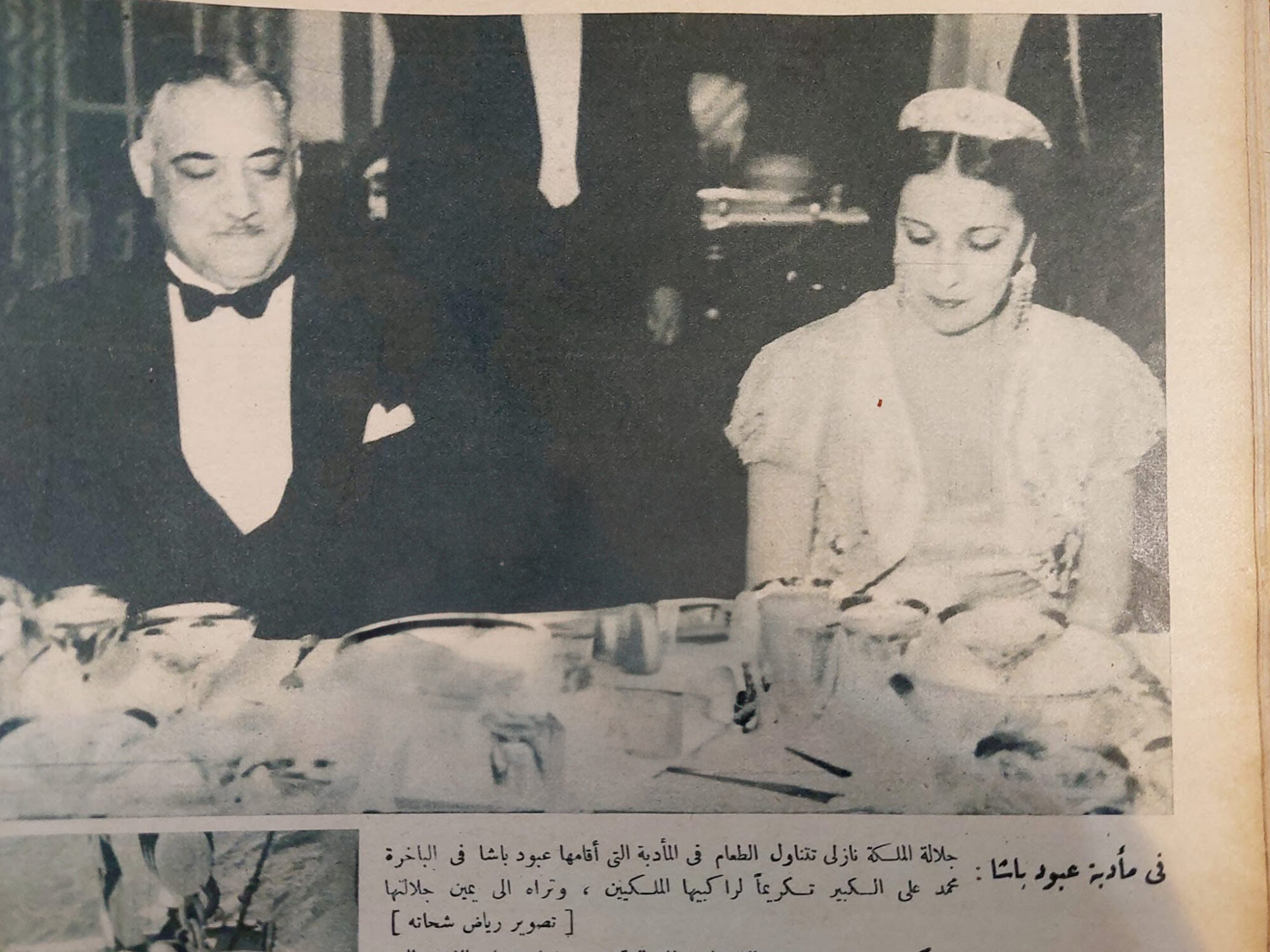
Clipping from Al Mussawar Friday, April 28, 1939
In another dinner, Princess Fawzia can be seen wearing a floral dress.
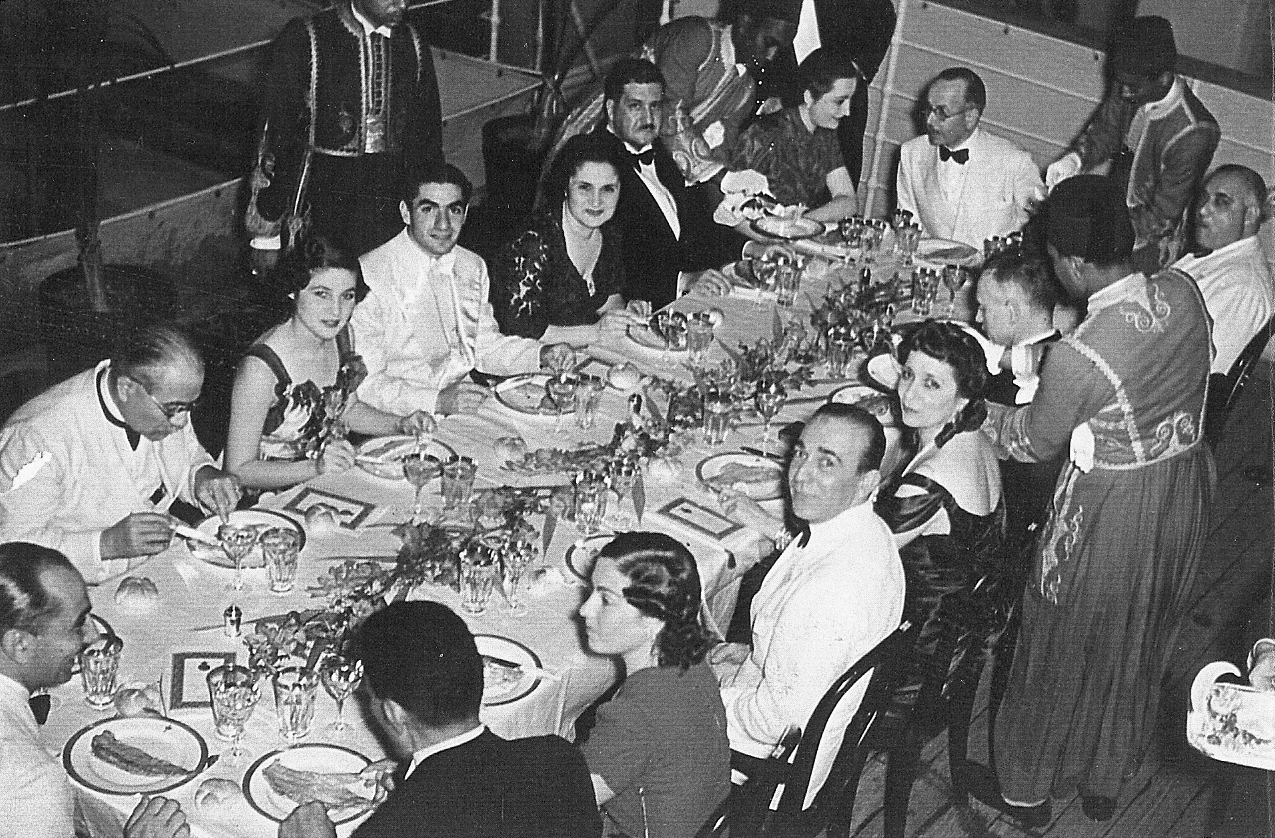
In this photo, we can see Princess Fawzia on the left sitting next to her groom, Mohamed Reza. On his left is Mrs. Zainab Zulficar, Queen Farida's mother. On the opposite side, we can see Queen Nazli with her brother on her left, and Princess Faiza on his left.
There are photos of another dinner, that I assume was also on the boat, we can see Princess Fawzia wearing the emerald necklace from the Iranian Crown Jewels.
This diamond and emerald necklace comes from the Qajar dynasty which preceded the Pahlavis. The original owner of this tiara is unclear. Records indicate that it belonged to Qamar-i Sultana (moon of the kingdom) but no further identification survives. Since this title was reserved for women of the highest rank, the most likely candidate is the princess, who was the granddaughter of Fath Ali Shah and wife of Nasir Al-Din Shah. Below you can see photographs of the necklace and a pregnant Crown Princess Fawzia wearing it (and the matching tiara) in 1940.
This was a time for everyone to relax before two more weeks of arduous celebrations. Below, we can see the couple having tea with Queen Nazli and her brother among others. Princess Fawzia is holding a food menu.
It wasn’t all parties on the ship. For the younger princesses, at least, life on the S.S. Mohamed Ali was business as usual, or shall we say school as usual? While the adults had their fun, Princess Faiza and Princess Faika had their lessons, as depicted in Al Mussawar Magazine at the time.
It wasn’t too long before the wedding party arrived in Bandar Shahpur (now known as Bandar Imam Khomeini). The new bride was then only a train ride away from her life as a Pahlavi royal. As the ship docks, this is where we will leave the couple for now. In part 2, I will tell you all about Princess Fawzia’s journey to Tehran, the celebrations that took place until mid-April, her Iranian wedding, and, of course, her second fabulous wedding gown. Sign up for the newsletter to be the first to know when it’s out.


